YOUR REIMAGINE LIFE

Manifesting change

Embracing simplicity
Reframing autumn
Rejuvenate your relationship
AUTUMN - ISSUE 19

2 IMAGES: COVER: PEXELS/HATICE BARAN. THIS SPREAD: UNSPLASH/MICHAEL-DEMARCO, TOA HEFTIBA, DIANA LIGHT Contents 26 Mind body reset Dive into your intuition and unlock your power to soothe, calm and heal 32 Focus and flourish Katie Scott explains how to restore clarity by retraining our brains 38 The fail factor Have we forgotten how to marvel Learning how to fail is the key to success, discovers Luciana Bellini 44
is enough
to love and live with what you have is the key to a life transformed 4 From the editor September is an ideal time for selfreflection and personal growth 6 The Mindful Five Luxury gifts to envelope you in the warm, inviting aroma of the new season 8 The Reading List Our selection of essential reading for autumn 10 Five apps for… For resetting, rethinking and reframing your life 12 A tale of a seed A personal childhood story about the power of embracing growth and change 14 Meditation A beautiful meditation for a gentle autumn 18 Season of surrender Emma Johnson offers a different way to greet the season 18
Enough
Learning
50
Manifesting your beautiful life
We have the power to make our dreams a reality, if only we are open to what is possible
56
Reclaiming ourselves
Selflessness is not a virtue, it's time to change things, says Suzy Reading
62
Rekindling the fire
Is it possible to achievce true contentment, asks Luciana Bellini

68
The new age Elsa Mills looks deeper innto the ancient, powerful wisdom of the crone archetype
62
74
Reimagining rest
From burnout to balance, Kat Teall changes our perception of what it means to rest
80 Clean slate
Claire Brayford handpicks her favourite beauty buys for true seasonal renewal

84
Unlocking our full potential
Dr Asma Naheed says that, when it comes to personal growth and change, mindset is vital
88 The power of metaphor
Embrace emotional states through mindfulness and symbolism, suggests Najla
92 The coal basket
A simple lesson about the small steps we take to success
94
Jewellery – the ultimate mood booster
How the power of jewels goes beyond their mere appearance
98
God's Name
Al-Ahad - The Only One, The Unique
72
80 86
80
Managing Editor
Dr Asma Naheed
Editor Elle Blakeman
Editorial Assistants Paris Starr
Annabelle Spranklen
Creative Director Vanessa Grzywacz
3
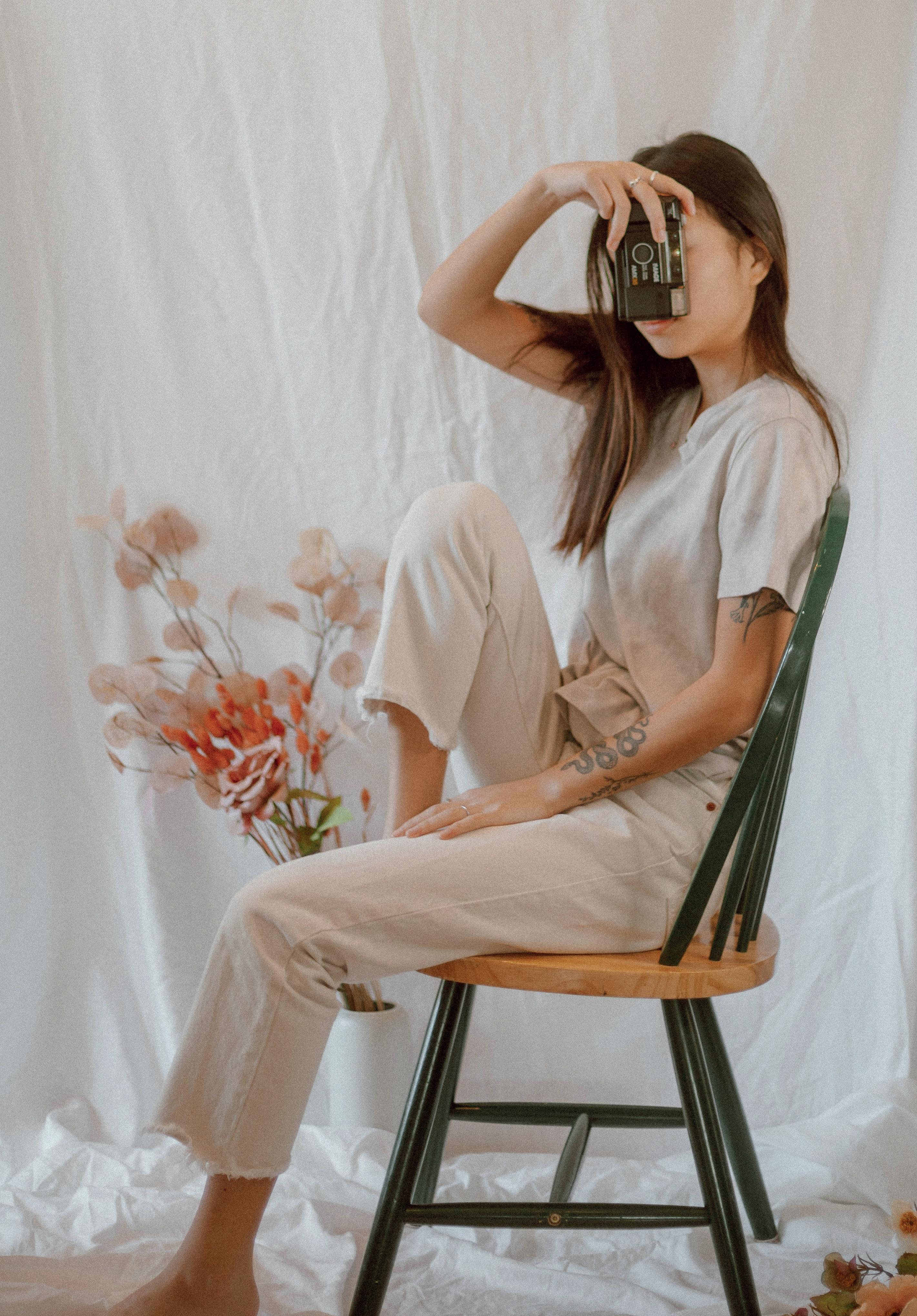
This time of year, I start to reignite passions that might have waned during the summer
From the editor...



September marks the beginning of a new season, making it an ideal time for self-reflection and personal growth. I always find myself at this time of year leaning into a space of reimagining and self-discovery. I find the shifting seasonal change allows me the scope to make meaningful changes – both big and small – to my life.
Embracing change as an ongoing part of my life has made such a difference to my resilience and ability to find perspective when I need to. Feeling the eternal shifting of the sands beneath my feet and in my metaphorical world, I now find it much easier to welcome the unexpected with curiosity and grace.
This time of year, I start to reignite passions that might have waned during the summer, and work on cultivating the kind of authenticity that allows me to stay the course of my life, whatever might be coming in the future.
This issue, as part of our commitment to embracing change, Emma Johnson considers a different way to feel into the autumn season - as a reminder of the endless shifting focus of our lives; while Luciana Bellini is embracing mistakes and Suzy Reading reminds us that putting ourselves first isn’t selfish.
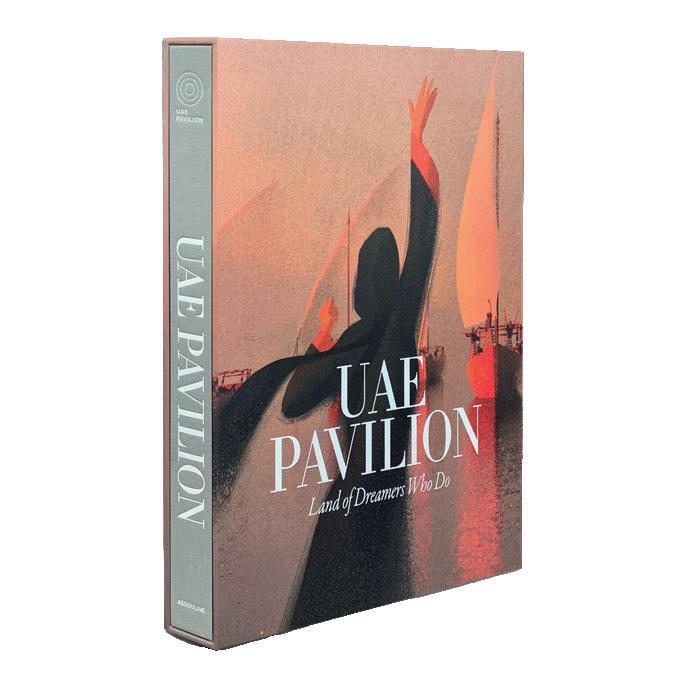
We’re also thinking about the Japanese ideal of aramahoshi - appreciating the simple things in life; using the wisdom of our body to reset unhealthy thinking patterns; rejuvenating our personal relationships with wisdom from psychotherapist Philippa Perry; and retraining our brain so we can concentrate more effectively.

My invitation to you this issue, is to be inspired to live authentically, pursue your passions, and create a life that truly sets your soul on fire. Give yourself the grace to be different, to embrace change, and have the courage to reimagine your lives in ways that aligns with your deepest desires and values. Behold all the abundance that surrounds you; and lean into it with joy.

5 EDITOR'S LETTER ILLUSTRATION: CLYM EVERNDEN. IMAGE: UNSPLASH/JASMIN CHEW
POA, Chanel
Le 5 à 7 mini leather shoulder bag, £1,200, Yves Saint Laurent
Brass, shagreen and wood chess set, £3,205, Aerin
UAE Pavilion: Land of Dreamers Who Do, £167, Assouline
The Mindful 5
With darker mornings and cosy nights in, autumn is a chance for resetting and renewal. These luxury gifts will help envelope you in the warm, inviting aroma of the new season
MORNING ZEN
The ancient discipline of yoga is all about mental stillness and feeling calm, the perfect antidote after a jam-packed summer of busy plans. This isn’t about how bendy you can be or how long you can do a handstand for - it’s all about reconnecting with your body and restoring your sense of inner peace. And there’s no better mat to practice on than the Kintsugi cork mat, made with a cushioned surface for joint support and a central line graphic to keep your alignment and position on check. A few minutes every morning will be transformational.
Cork Yoga Mat, £95, Kintsugi

6
PATCHWORK PRETTY
As the nights draw in, revel in the excuse to hunker down with a book in your favourite reading nook, wrapped up in this Vuokko quilt – a Nordic home textile piece laden with dainty floral artwork. Dreamt up by talented artisans in India, and designed in a small barn in West Dorset, its mustard patchwork design, overlaid with a bouquet of floral embroidery, is a nod to the warmth of the autumnal season. Just add a mug of steaming hot tea or cocoa.
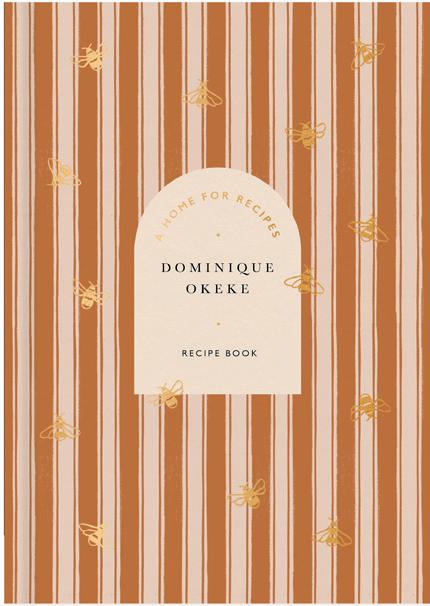
Vuokko Embroidered Gingham Quilt, £395, Liberty

AUTUMN AROMAS
There’s something reassuringly mellow about Jo Malone London’s newest fragrance, English Pear & Sweet Pea Cologne - featuring the tones of sun-warmed orchards and glistening gold harvests, with a gentle drizzle of green pears that fill the branches, ready to be picked. It’s created using a 100 per cent natural pear fruit extract, a byproduct of the food industry. This is a scent that encapsulates the new season’s energy, that will transport you to the cosy, glorious aromas of autumn.
English Pear & Sweet Pea Cologne, £118, Jo Malone London

LIGHT IT UP
It’s not only chunky knits and plum lipstick that mark the arrival of autumn, it’s also the flickering flame of a scented candle. Hand-poured in the UK with 100 per cent natural materials, Underground’s ginger root fragrance captures the smell of sharp intense ginger and woody Haitian cardamom. Light it up and you’ll be mentally whisked off for a blanketed-up staycation in the Scottish Highlands or a lazy weekend crunching crispy leaves in the park, all without even leaving your sofa.
Underground Scented Candle, £95, Tom Dixon
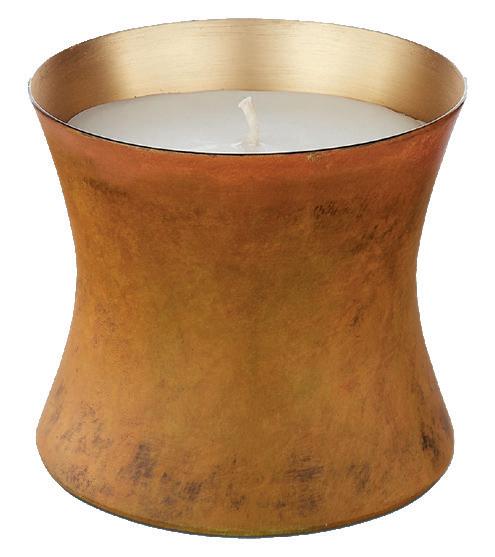
FOODIE THOUGHTS
Cooking can be so therapeutic – it rewards you mentally and emotionally and nourishes you physically, it can bring people together, and it’s fun. The more often you cook and the more nutritious your choice of food, the better you may feel as a whole. Whether you’re up to MasterChef standards or a complete novice, a recipe journal like this one is a way for you to keep tabs on your successes (and failures), with space to note your top stores and restaurants, ingredients and more.
Recipe Journal, £34, Papier
7
The Reading List
Our autumn selection takes a look at rediscovering joy after hardship, reframing how we think about ourselves and those around us, and finding happiness in unexpected places
A Therapeutic Journey: Lessons from the School

of Life
ALAIN DE BOTTON (PENGUIN)
This deeply personal narrative charts de Botton’s mental health journey, from the loneliness of collapse to the kindness, compassion and wisdom needed for recovery. His brave account touches on the moments when all direction and hope is lost, when we sense we’re disappointing those around us, and when we regain the strength and courage to seek help, stability and contentment. It’s a practical guide that will aid anyone going through a dark period, showing that where there is hope there will be joy.
The Cat Who Taught Zen

JAMES NORBURY (PENGUIN)
A wise cat sets off on a journey to find a legendary tree, under which those who sit will find ultimate wisdom, peace and a sense of the world in which they live. Along the way, the cat meets a curious hare, a chattering monkey, a tiresome tortoise, a terrifying tiger and a playful kitten, whom he teaches – and from whom he learns – parables rooted in traditional Zen stories. This adult fable is a gentle exploration of life and reflection.
The Balanced Brain: The Science of Mental Health

CAMILLA NORD (PENGUIN)
Reframing what we think we know about happiness and pleasure, award-winning neuroscientist Camilla Nord reveals the ways science and technology are revolutionising perspectives on mental health, showing why events and treatments affect people in different ways. She looks at how eating chocolate to lift our mood often works on the same pathways in our brain as pharmacological treatments for mental health disorders, and how there are more possibilities for recovery and resilience than we might think.
8
Right Kind of Wrong: Why Learning to Fail Can Teach Us to Thrive
 AMY EDMONDSON (PENGUIN)
AMY EDMONDSON (PENGUIN)
Our perspective on failure is convoluted. First we were taught that failure was to be avoided at all costs. Then it became something to be admired: a trait we should all be honest and open about. The trouble is that neither approach distinguishes good failures from bad, meaning we miss out on learning how to do it well. Psychologist Amy Edmondson reveals how we get failure wrong, and suggests how to get it right, using a lifetime’s research to share how to harness the revolutionary potential of failing without having it held against you.
Go Your Own Way: A Journal for Building Self-Confidence
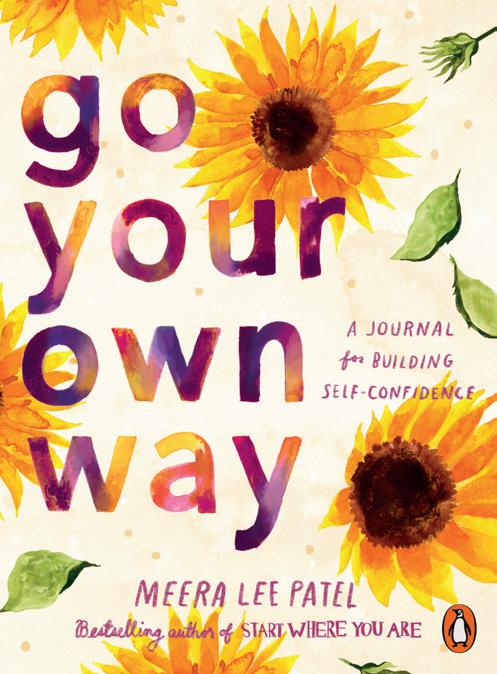
MEERA LEE PATEL (PENGUIN)
It’s easy for us to lose our way, no matter where we are in life. Artist and author Meera Lee Patel’s colourful artwork illustrates the expansiveness of our feelings. Thought-provoking words and questions remind us that life is a spectrum of many emotions: comfort, discomfort, acceptance, loneliness, love, enthusiasm and openheartedness. While that spectrum may not always be what we’re looking for, Patel shows that it undoubtedly leads us to the truest versions of ourselves.
Tom Lake: A Novel
ANN PATCHETT (HARPERCOLLINS)

It’s the spring of 2020 and Lara’s three daughters return to the family orchard in Northern Michigan. While picking cherries, they ask their mother to tell them the story of Peter Duke, a famous actor with whom she shared a stage and a romance at the Tom Lake theatre company. As Lara recalls the past, her daughters begin to reexamine their own lives and relationship with their mother. A rich and moving novel about family, love and the lives that mothers live before the birth of their children.
The Meaningful Modern Home: Soulful Architecture and Interiors
CELESTE ROBBINS (PHAIDON)
Who says modern homes can’t be full of warmth, comfort and a deep sense of place, as if they’ve stood for centuries? In this beautiful collection of eye-catching designs from across the US, Chicagobased architect Celeste Robbins proves that contemporary homes can be inviting, comfortable and graciously responsive to how we and our families live, reframing our ideas of modernism.

9 BOOK OF THE MONTH
Five apps for… Reframing your life
Whether it’s kick-starting a new habit or better managing the bad ones, these apps will help you reset, rethink and restart
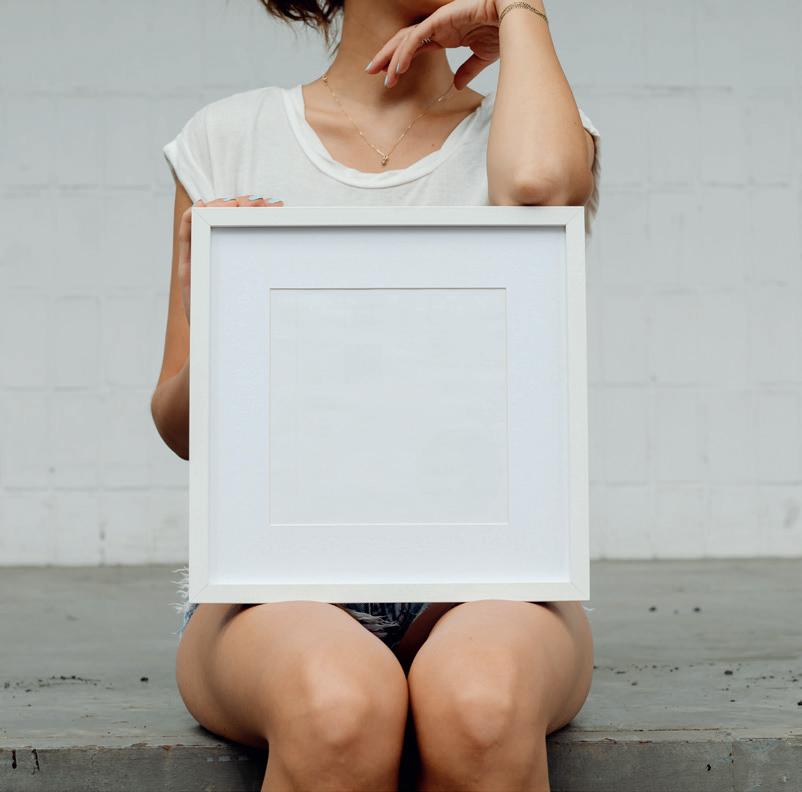
10
IMAGE: PEXELS/KAROLINA GRABOWSKA
MIND RESET
Promising to transform your mental wellness in just two minutes a day, this app uses the Split-second Unlearning model (SSU) and advanced eye-tracking technology to help clear your mind. You’ll be asked about what you are struggling with (stress, fatigue, sleeplessness, trauma) with challenges to interrupt the subconscious connection between your mind and emotional memories, allowing your system to essentially clear ‘cached data’ and restore balance. mindreset.app
UNMIND
Unmind helps you measure, understand and improve your mental health with hundreds of bitesize self-guided tools designed by psychologists and field experts. From sleep to calmness, fulfillment to happiness, there’s sessions and exercises that are designed to enhance relaxation, focus, energy and mood – much like having your own personal mind gym in your pocket. unmind.com
REFRAME MIND
Whether it’s managing stress, kicking a habit or trying to live more healthily, Reframe Mind is on a mission to help you identify, control and regulate your emotions using the power of behavioural psychology and neuroscience. You will learn new tools and techniques to harness your internal locus of control by completing daily tasks for an improved mind – and life.
reframemind.com
PELOTON MEDITATION
Better known for its luxury bikes and treadmill workouts, Peloton also offers meditation classes that can be downloaded using the app. From energising morning classes to soothing sleep-inducing sessions to help unwind after a stressful day, whether you have five minutes or 30, bringing a sense of calm to your day has never been easier. onepeloton.co.uk/classes/meditation
STREAKS
Keeping up the good streaks is exactly what this app will help you do, whether that’s eating your five a day, taking a daily walk or practising small moments of meditation. The streaks don’t have to be measured daily – they can be weekly, or several times a week, so just adapt them for what you need. You’d be surprised at how much of an extra boost to your willpower it is to see those circles in your calendar gradually get filled over time.
streaksapp.com
11
5 4 2 1 3
A tale of a seed
Our Founder and Editor shares a personal childhood story about the power of embracing growth and change
In the pursuit of personal development, I firmly believe that change is not only constant but a transformational journey driven by intuition and conscious intentions. As a passionate advocate of self-development, I envision a world in which women embrace their innate potential and power, break through the glass ceiling and create positive change across societies. Personal change for women liberates suppressed voices, shatters societal barriers and stereotypes, and cultivates unwavering self-belief.
Every aspect of our life, from the tiniest grain of sand to the grandest celestial bodies, experiences transformation and renewal. This reminds us of the profound wisdom inherent in nature. Let me tell you how and why, by sharing a touching tale that my grandmother used to tell me – and which instilled my faith in change as a path to growth.
‘Once upon a time,’ said Grandma, ‘in a faraway land, there was a tiny, unassuming seed. This seed lived in the comforting embrace of a golden box – a cozy sanctuary that shielded it from the world’s uncertainties. It gazed upon its gilded surroundings, unaware of the vast possibilities that lay beyond its haven. Yet deep within its core, the seed felt an innate longing to explore and grow – a yearning for something more.
‘One fine day, a gentle breeze swept through the land, carrying with it the winds of change. The breeze whispered to the tiny seed, urging it to leave its golden abode and embrace the unknown. Filled with courage, the seed made a brave decision: to venture into the great beyond.
‘Gracefully tumbling and falling, the seed found itself nestled in warm, nurturing soil. As it surrendered to the earth’s embrace, it shed the protective shell that had kept it safe and secluded. In this act of surrender, the seed opened itself to the mysteries of nature, allowing its essence to merge with the vast universe.
‘This moment of vulnerability became a source of newfound strength. The seed discovered that letting go of the familiar unlocked the door to its true potential – a potential it had never imagined. And just like that, dear one, the seed learned the first lesson of embracing change: it is through vulnerability that we find our inner strength and capacity to grow.
‘As time passed, the seed began to grow roots, anchoring itself to the earth. In the darkness of the soil, it encountered challenges – the obstacles necessary for growth and transformation. Like the seed, my dear, we too must face life’s challenges and allow them to shape us into who we are meant to be. It is in these moments of darkness that we grow roots and stay grounded, even when the world around us seems uncertain.
‘Day by day, the seed stretched and persevered, reaching for life-giving sunlight. It broke free from its limitations; much as we must overcome selfimposed barriers to realise our full potential.
‘This growth journey was not without its challenges. But with each obstacle overcome, the seed experienced a newfound sense of purpose and fulfillment.
‘And before long, the seed blossomed into
12
a radiant flower: a living testament to the beauty that comes from embracing change and embracing growth. It became a vibrant symbol of transformation; a reminder that within every seed lies the potential for blooming into something extraordinary.’
At the end of story, Grandma reminded me that, just as the seed let go of its golden box and surrendered to the earth, we should release ourselves from the confines of our comfort zones and open ourselves to the possibilities that life offers.

As she ended the story, my imagination created a bed of roses in a lush green valley. The story grew as I grew but it never got old. In the seed’s journey, I found the courage to face the unknown, the strength to overcome challenges, the beauty of blossoming into my fullest self, and a poetic streak too. I hope you like it – let me know…
In life’s dance of change, we sway with the shifting tides; a world in flux, where transformation abides. To embrace growth’s sweet bloom in this ever-changing land, adaptation’s art holds the key in our hand.
Like a tree that bends, gracefully with the breeze, we withstand life’s storms, with unshaken ease. Through uncertainties, we find our way, embracing new chances, each and every day.
In the boundless realm of growth’s embrace, adaptation unlocks our potential’s grace. With each step forward, we bloom and rise, in the rhythm of change; our spirit flies.
13 IMAGE:
UNSPLASH/KRISTINE TANNE
A meditation for the
Autumn is a time of pause, of gifts from nature to the earth below, of loss and
In autumn we witness the dying of the trees and plants. Their death nourishes the earth and offers the gift of new life to come in the spring.
In autumn we witness the innate trust that nature has in the turning of its seasons. In the decay and loss that must come to make way for renewal and blooming in spring and summer.
In autumn we can soften and slow; be still and reflect. It comes like a deep breath out. After the expansion of summer, the season gives us permission to be still, and sink into the eternal turning of our lives.
Use this guided meditation to welcome autumn into your mind, body and heart. Let the magic of the season do its important work.

MEDITATION
Find a place of quietness and stillness. Let your body soften, your shoulders drop, and your gaze gently soften.
Take three deep, intentional breaths. Put down all the weight you carry with you. With each breath, let it go, and welcome whatever you are feeling right now.
Know that this is exactly where you are meant to be. Whichever way you arrived here is just fine.
Autumn is all around us, soft and slow, reminding us to let go, to give into the turning of the year. Everything in its own time, at its own pace – including you.
Sense the soft, wet earth underfoot, the crunch of frosty grass, the skitter of dry leaves, the crackling of bonfires, the hoot of an owl, the snuffle of a hedgehog.
Smell the ground after the rain, the dampness of the leaves, the smoke from a log fire.
Taste the earthy sweetness of blackberries, the honeyed tang of a pumpkin, the crisp freshness of an apple, the yeasty warmth of fresh bread.
Feel the air on your skin, the rain on your hair, the scarf around your neck, the woollen socks on your feet, the wooden logs in your hands.
See bold bursts of colour that leap from the landscape: the golden yellow,
Feel the light flowing into your shoulders and your chest. Feel it easing and softening. Feel it encircling your shoulder blades. Let it flow down into your heart space and your lungs.
Feel it flowing down your back, along your spine and into your hips. Feel it circling up through your belly and stomach – a warm, soft and loving light.
Feel it softening in your legs and knees, easing tightness or pain. Feel it in your shins and calves, flowing into your ankles, the soles of your feet, your toes.
Feel this light flowing all through your body: swirling up and down and around, into each corner, softening and warming, comforting and loving.
Feel autumn wrap itself around you. The rain, the smells, the sound, the light.
Place your hands on your heart. Breathe into the heart space. Feel the pulse of life around your body.
the fiery red, the burnt orange, the chocolate brown. See the bare branches of trees, the darkening sky, rain on a window, dappled sunlight through leaves.
Focus your attention on your body. Feel its weight held by the earth. Feel yourself sinking gratefully into that hold.
See the warm glow of autumn light around your body; not too bright, not too hot, just warm and soft.
Feel the light flow through your head and neck – flowing into your eyes, nose and mouth, softening your jaw. Flowing to your throat and the back of your head, releasing the tension there.
Connect with the breath. Feel your body relax and slow down.
Feel autumn flowing into your heart as you breathe in. Feel it sending light through your body as you breathe out.
Breathe the light in, and send it out. Breathe it in to your heart, and out to your body.
Feel the healing, softening light, all through your body, and in your heart.
Let it remind you that you are safe here. You are held by the season just as you are held by nature.
You may always return to this calming space; always find solace here.
Stay here as long as you need. Hold yourself here – surrender to the season.
IMAGE: UNSPLASH/KALISA VEER
Breathe into the heart space. Feel the pulse of life around your body
season of surrender
renewal, of death and rebirth

MEDITATION

‘The language we use is extremely powerful. It is the frame through which we perceive and describe ourselves and our picture of the world.’
IMAGE: UNSPLASH/MERIC TUNA
Iben Dissing Sandahl

Season of surrender
Autumn signals the end of summer, but heralds another beautiful revolution in your ever-changing year. Emma Johnson offers a different way to greet the season
As we settle into September, amid the last heady days of an intermittent summer, it’s clear that the seasons are shifting, and the earth is readying itself for change. We often find change hard, and the shift to autumn and winter, and the darkening of the days, can feel challenging.
Yet autumn is potent, powerful and a good time to reframe and develop your relationship with the natural world. That helps you move with the energies of the earth, bringing rest and rejuvenation when you need them.
Autumn reminds us that we are not meant to bloom all year, and that change and loss – as much as life – are part of our existence. The autumn equinox, in late September, is a rich time of transition. The sun hovers directly above the equator, day and night are the same length, and we find ourselves in a state of stillness and balance.
‘We were meant to slow down and bleed and howl and then get silent and internal, and all this happens as our bodies and energy levels are shifting and changing,’ writes
18 SEASONAL LIVING
IMAGE:
UNSPLASH/MICHAEL DEMARCO


Becca Piastrelli in her beautiful book Root & Ritual. ‘Though we live in a modern era, our bodies’ processes are ancient and deserve our respect.’
This is what I like to call the sacred pause. It happens four times a year, as one season shifts to the next. The sacred pause calls us to stop for a moment and look at where we are, where we’ve been, and where we’re going. We can reflect on a bountiful summer, abundant and expansive, and look ahead to the turning of the year, mirroring nature as we do.
Autumn is the season of the water element. This represents giving thanks and letting go, the ebb and flow of life through us all, and the changing yet constant nature of water.
‘Autumn is an adventure, a season of transformation and a time to prepare for the long winter ahead,’ writes nature author Louise Baker in Autumn: an anthology for the changing seasons. ‘It is a thousand leaves falling to the ground and nourishing the soil beneath… It is the refreshing winds that sweep the haze of summer away; it is the calm before the storm.’
This is the time to root ourselves deeper into the earth. Just as trees begin to focus their attention below ground, their sap levels falling, directed from branches to soil and roots, so we can turn our focus downwards and inwards.
‘Autumn isn’t the season of decay or death, but one of wealth and renewal,’ says Baker. ‘It is the changing landscape, the subtle anticipation of winter. Autumn is to be enjoyed.’
September is a great time to start a simple grounding practice. In the morning, spend just ten minutes with your bare feet on the earth in your garden. Feel the changing temperature on your skin, the shift of the seasons. Perhaps the ground feels wetter under foot, and the air crisper, with each morning. Listen to the change of the birds’ calls; the way the light is different at the same time each day. And, with this shift, allow your body to reset too.
Conjure the energy of the water element with wild swimming, dipping your toes in a stream, or simply mindfully taking a bath and connecting with the feeling of water on and around your body. Feel the way it moves, its weight and warmth, its softness and its strength.
As September moves into October, the days grow shorter, the nights longer. We lose over two hours of light from our day in the weeks following the autumn equinox. When darkness slowly returns, and the night lengthens, can you bring an intentional shift to your morning and evening rituals?
‘Morning pages’ are a wonderful way to gently awaken to a new day. This daily practice of writing three longhand pages of thoughts, without design or agenda, allows what’s in your heart to flow onto the page. Undertaken first thing in the morning, they are less about writing and more about bringing a sense of flow and movement to your consciousness.
‘They are about anything and everything that crosses your mind – and they are for your eyes only,’ explains Julia Cameron, who created the concept in her landmark book The Artist’s Way. ‘Morning pages provoke, clarify, comfort, cajole, prioritise and synchronise the day at hand. Do not overthink morning pages: just put three pages of anything on the page... and then do three more pages tomorrow.’
21 SEASONAL LIVING
IMAGE:
UNSPLASH/YULIIA TRETYNYCHENKO
As the nights lengthen, set aside a small window in your bedtime ritual to create a moment of light-filled reflection. A simple five-minute meditation can be a beautiful way to ground and centre you before sleep, thinking about the day that has been and the rest ahead. Take this opportunity to release the day, just as trees release leaves. Reconnect with the element of water: imagine a waterfall gently washing your body from head to toe, sending the day back to the earth.
As October continues, the nights close in, and we approach the sacred time of Samhain and All Souls’ Day. Both ask us to step back and remember those we have lost. Far from being morbid, this is a potent time for connecting with our roots, our lineage and our ancestors – and, in connecting with them, perhaps connecting with ourselves too.
‘Autumn is associated with intuition, healing and divination, as what you have learned from your journey becomes integrated into wisdom,’ writes Isla Macleod in her book Rituals for Life. She reminds us that autumn is an opportunity to tune into our innate knowing, our female intuition: ‘This is a powerful time to communicate with your ancestors and guides in the invisible realms. With the autumn wind blowing, you are invited to remember, to rejoice and give thanks for the myriad ways you are supported by life.’
This is a lovely time to create a remembrance altar in your home. This sacred space doesn’t have to be big, but gives you a focus for remembering those you have lost, and the generations of women and wisdom that came before you. Create a quiet, daily ritual of standing before the altar, one hand on your heart, and silently giving thanks for the divine inner wisdom that flows through you still. Welcome the sense of loss, because it is part of the deep and rich fabric of life.
Even November’s darkness brings a pause and reminds us of the balance of light and dark in our lives. At this time of year, it helps to think of the darkness as a metaphor for challenges in our lives. Sometimes we need to let ourselves sink into pain and loss, to allow ourselves to move through and beyond them. We cannot see the strength of our own light if we aren’t prepared to go into the darkness to find it.
‘The seasons have become such internal experiences,’ observes Becca Piastrelli, ‘perhaps giving me a glimpse of what my ancestors felt long ago.’
As November shifts towards winter, another sacred pause is ahead of us: the winter solstice. Allow yourself the space to look back over the past three months. Read through your morning pages, add to or change your altar, continue your grounding practice and reflect on how the ground beneath your feet has changed from day to day, week to week.
Winter will come, and it will make way for spring. But, for now, autumn comes to hold us in the pause, and remind us of the balance of light and dark, love and loss. It comes to bring space for reflection and the deep inner work that we can always do; the continual journey through the year, and through our lives.
This is the season of surrender and slowness, of feeling the wisdom of nature, and all she has to teach us. ‘Nature does not rush and I am learning not to rush either,’ says Piastrelli. ‘So much anxiety can come from resisting whatever is occurring in the now, however challenging it may be. I breathe with it. I rest my body. I trust that we are never stuck and that the wheel is always turning.’
22 SEASONAL LIVING
IMAGE: UNSPLASH/YULIIA TRETYNYCHECKO


IMAGE: UNSPLASH/OKSANA ZUB
‘Instead of saying, “I’m damaged, I’m broken, I have trust issues,” say, “I’m healing, I’m rediscovering myself, I’m starting over.”’
Horacio Jones


IMAGE: UNSPLASH/MARINA PIANO
MIND BODY RESET
Within us exist all the tools we need to nurture ourselves. Dive into your intuition and unlock your powers to soothe, calm and heal, says Nicola
Chantler
27 MINDSET
From the moment we’re born, we instinctively seek ways to soothe and nourish our human condition. Being rocked and shushed as a newborn in our mothers’ arms. Being held by a loved one when our tears fall. Feeling unbridled joy as our bodies learn to dance. These natural movements, sounds and sensations are among the greatest tools we possess, bringing us into a state of calm.
Our inherent responses to these practices are no accident. They trigger our bodies to move out of the ‘fight or flight’ stress response and into a place of regulation and peace –our parasympathetic nervous system. It’s in the sanctuary of ourselves and others that we feel clear, calm and able to meet our needs.
‘Our bodies are constantly steering us towards metabolising old stuff, to clear it out so we can find deeper states of regulation,’ writes Kate Northrup, speaker and author of Do Less. ‘When we do, more joy, reactivity, bliss and abundance become possible.’
Leaning into intuitive joys helps us discover the nourishment in our every day. ‘Let the soft animal of your body love what it loves,’ wrote poet Mary Oliver. We feel free when we sing along loudly to a favourite song, dance with abandon at a party, practise yoga, cook a delicious meal, or sketch.
Our connection to inherent joys goes back to childhood. We found comfort in a favourite toy, snuggled into our caregivers’ arms, or fell asleep to a favourite lullaby. Trips into nature would inspire awe and wonder. Filling our pockets with pine cones, feathers, smooth stones and shells, burying our toes in sand or mud, feeling the warmth of the sun on our faces, we would while away hours as we followed our curiosities and explored the outside.
That instinctive connection to the natural world carries on long into adulthood. Many of us feel a pull to the sea, or wish for a walk in the forest when we need headspace. ‘Nature is inherently regulating for our nervous systems because we are nature,’ Northrup writes. ‘When we’re in communion with the earth, we remember who we are.’
When we choose to trust our bodies’ inclination to get outdoors, move, laugh, breathe, hug and sing, we open up a place of freedom, authenticity and, crucially, safety.
This fosters greater resilience in our bodies and lowers our stress response to life’s ups and downs. In turn it activates our vagus: the long nerve that connects our brain stem to our body and increases parasympathetic nervous system activity.
Over our evolution, we have developed ways to tune into the inner wisdom of our bodies. For centuries, yoga, ecstatic dance, singing and meditating have deepened our connection to our true selves. Over time, other methods have emerged, such as EFT tapping, laughter therapy and even cuddle therapy, helping to soothe and heal our human experience.
Whichever practice calls our unique soul, there is a common denominator: our need to continually realign ourselves with our truth. So here’s how to spark our intuition and regulate our nervous system naturally:
l Dancing Moving our body rhythmically, in a repeated pattern, is a great way to get out of a stress response and into a place of balanced calm
l Humming Our vagus nerve is connected to our vocal chords. Humming and singing stimulate and create vibration in our vocal chords, which in turn activates the vagus. This helps strengthen vagal tone and helps us move into a parasympathetic state
l Rocking We have a natural inclination to rock when we need to soothe and comfort. Many of us intuitively feel reassured by this action if we were rocked as infants. The movement stimulates our body’s relaxation system and sends signals of safety and calm
l Hugging Gentle, reassuring pressure enables the body to move into a parasympathetic state. It also helps regulate cortisol and oxytocin, which boosts our immune system. We might also try gently squeezing, stroking and shaking
l Grounding Taking off our shoes and connecting with the Earth is a natural, instant way to regulate our nervous system. Grounding has been shown to lower cortisol levels and blood pressure.’
To quote W. B. Yeats, ‘The world is full of magical things, patiently waiting for our senses to grow sharper.’ Slow down and take time to notice how your body feels, and what makes your soul sing. Your most joyful life is out there waiting for you.
28
Leaning into intuitive joys helps us discover the nourishment in our every day

29 MINDSET
IMAGE: USPLASH/LEON LIU

‘One day, like an old growth forest, you will evolve into your magnificence.’
IMAGE: PEXELS/SEAN VALENTINE
Mary Reynolds Thompson

FOCUS AND FLOURISH
As the world clamours for our attention, it’s hard to stay focused.
Katie Scott explains how to restore clarity by retraining our brains
With seventeen tabs open on my computer, my phone shouting alerts at me, and one ear cocked for what was happening beyond my closed door, I was getting nowhere with my article.
To concentrate, I have had to retrain my brain. This has been an exercise in recognising that how my brain works has changed, including a dramatic shift in my concentration span. It was a reset prompted by the realisation that I needed to adapt how I work to get the best from myself.
This isn’t simply because of the distractions we all face. If needs be, I can shut everything off. But I have noted – after many years of multitasking, and listening to six voices at once (one being my internal and constant checklist) – that my brain flits incessantly. I have had to teach myself how to concentrate, but also rethink how I approach my working day, and even reset how I think about work itself.
First was the recognition that, before 8am, my brain crawls rather than trots. I once interviewed the founder of a creative agency, who urged his employees to think about their bodies’ rhythms. He asked them to note their energy levels throughout the day: when they preferred to do certain tasks and when they
32 WORK

struggled to concentrate. It was a huge insight into the ebb and flow of the mind.
Working against your circadian rhythm, notes the National Institute for General Medical Sciences, ‘can cause sleep disorders, and may lead to other chronic health conditions, such as obesity, diabetes, depression, bipolar disorder, and seasonal affective disorder.’ This is an issue for people who work in shifts or across time zones; but it’s also relevant to those of us who can be found typing in a lamp-lit corner as the moon sails across the sky.
We need to work with our bodies’ natural clocks, but recognise that our myriad everyday tasks require different levels of attention and skill. When I’m feeling less than alert, I can browse emails, but not delve for ideas for a feature or carry out an in-depth interview with a neuroscientist. However, all the while, I am processing.

In his book Thinking, Fast and Slow, Daniel Kahneman describes the brain as two characters: ‘The intuitive System 1, which does the fast thinking, and the effortful and slower System 2, which does the slow thinking, monitors System 1, and maintains control as best it can.’
We should, Kahneman suggests, harness the different attributes of these two systems to work smart: ‘The attentive System 2 is who we think we are. System 2 articulates judgments and makes choices, but it often endorses or rationalises ideas and feelings that were generated by System 1.’ Our attention is focused by System 2, but its abilities are limited, so we need System 1 too. And we need to recognise that we think fast and slow at the same time. It was the fast decision-making – the constant humming of my brain – that was preventing the slow thinking. I felt constantly on edge because there were so many things flying about my head that I couldn’t concentrate on just one. I wasn’t giving myself time to ponder and problem-solve. Imaging and analysis is key to my work as a creative, but I need oversight and clarity in other aspects of my life too.
Author David Allen defines this ‘ambient angst’ in his book Getting Things Done: The Art of Stress-free Productivity: ‘There’s a sense that somehow there’s probably something we should be doing that we’re not, which creates a tension for which there is no resolution and from which there is no rest.’ He likens our memory to that of a computer: ‘The conscious mind, like the computer screen, is a focusing tool, not a storage place. You can think about only two or three things at once. But the incomplete items are still being stored in the short-term memory space. And as with [a computer’s memory], there’s only so much stuff you can store in there and still have that part of your brain function at a high level.’
This is a reflection on a society in which, he explains, the boundaries of our work are

34
‘disintegrating’ and the burden on our brains is huge: ‘Most of us have, in the past seventy-two hours, received more change-producing, project-creating and priority-shifting inputs than our parents did in a month, maybe even in a year.’
So I made a list. I see your eyes rolling. But this wasn’t scribbles on the back of an envelope. It was a brain dump of what David Allen terms ‘open loops’: things that need doing that haven’t been addressed. That can be something as minor as replacing a light bulb or something as major as writing a first novel.
Identifying and capturing all of these open loops is a gargantuan task, but it feels good. I use Any.do, which allows me to add tags to tasks, and to differentiate between personal and work items. The list is ever-changing; I add and subtract items daily. But it has quietened the feeling that something needs doing and the consequent fumbling to figure out what.
The exercise also forced me to think about outcomes. I looked at what each task would require, how long it would take, and why I was doing it. From this emerged priorities.
My working day is often impacted by factors beyond my control, from recurring coughs to the minutiae of maintaining a home. But having the brain backup has dulled the noise in my head. I still get distracted. I still forget things. But I can concentrate better and I feel less tired and irritable. I am also at peace with the fact that sometimes my brain needs me to turn off and be still. These moments of slow contemplation are just as valuable – if not more so – than the moments when my thoughts are flying frenetically.
How to hone your concentration
Spend a few minutes each day noting when you felt alert and worked efficiently, when you dipped, when you found things challenging, when you ate and when you slept. Over a few weeks, you’ll see patterns forming. For women, there can be a correlation with your cycle. Work with that, not against it.


Learn to recognise when your productivity dips, and when you are overreacting, or indeed underreacting. Step away and do something that
will help you relax and clear your head. ‘Your ability to generate power,’ David Allen states, ‘is directly proportional to your ability to relax.’
Try task management apps to find one that you like, then enter every ‘open loop’ you can think of. To deal with them, Allen recommends, ‘You must first identify and capture all those things that are “ringing your bell” in some way; clarify what, exactly, they mean to you; and then make a decision about how to move on them.’
WORK
IMAGES: PEXELS/SAMSON KATT


IMAGES: UNSPLASH/PINE WATT
‘A reframe is not about telling yourself that your fear is wrong. Reframes are about finding another way to look at the possibilities of your life.’
Rebecca K. Sampson

THE FAIL FACTOR
Learning how to fail well is the key to success, discovers Luciana Bellini

39
IMAGES: UNSPLASH/KINGA HOWARD REFRAME
How do you feel about failure? Is it a necessary part of life – an inevitable pit stop on the path to success? Or something to be avoided at all costs, because you wallow in guilt and regret when you experience it?

Failure is something we encounter throughout our lives, personally and professionally. The challenge is not to avoid it. The challenge is to ensure we fail well.
That’s the premise behind Amy Edmondson’s new book Right Kind of Wrong: Why Learning to Fail Can Teach Us to Thrive. The author, an influential psychologist, helps people and organisations learn, so they can thrive in a world that keeps changing. She draws on her research into the science of ‘psychological safety’, which shows that the most successful cultures are those in which you can fail openly. It’s an eye-opening read that illustrates how often we get failure wrong – and reveals the things we need to change to get it right.
It starts, Edmondson writes, ‘with understanding that not all failures are created equal. Some failures can rightly be called bad. Other failures are genuinely good.’ She identifies three archetypes: simple, complex and intelligent. Simple failures – those caused by slip-ups and mistakes – can generally be avoided with care.
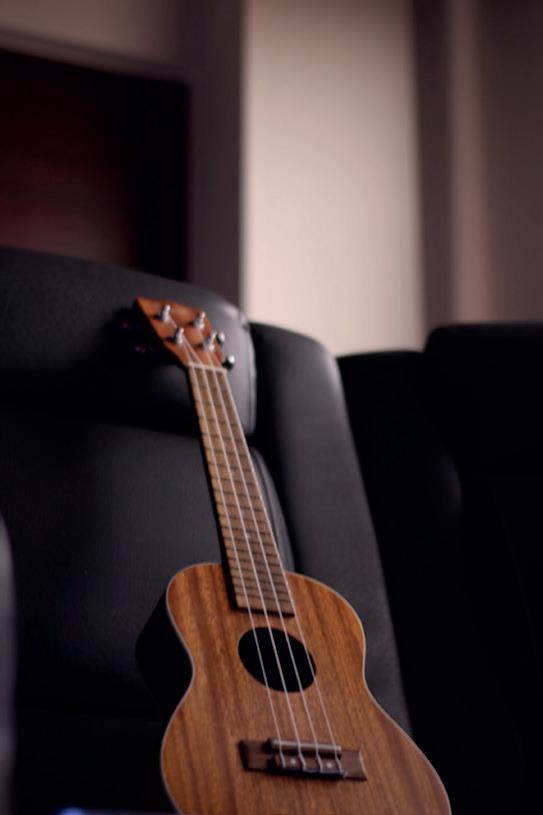
Complex failures are those that have ‘multiple causes and often include a pinch of bad luck, too. These unfortunate breakdowns will always be with us, due to the inherent uncertainty and interdependence we face in our day-to-day lives.’
The third type – ‘intelligent’ – are those that Edmondson refers to as ‘good’ failures. Often found in the realm of science, these are the ones
that are part and parcel of the quest for ground-breaking medical discoveries – or, to give a more prosaic example, the merry-go-round of bad dates we endure before finding the right person. ‘Intelligent failures are the only type genuinely worth celebrating,’ writes Edmondson. ‘We must welcome this type of failure as part of the messy journey into new terrain, whether it leads to a life-saving vaccine or a life partner.’
Identifying types of failure isn’t difficult. What’s hard is making sure we learn the valuable lessons they have to offer. Anyone who achieves the heights of success will tell you that failure is a necessary part of the journey. ‘It is impossible to live without failing at something,’ J.K. Rowling said in a Harvard commencement address, ‘unless you live so cautiously that you might as well not have lived at all – in which case, you fail by default.’ Then there’s Billie Jean King’s memorable quip: ‘For me, losing a tennis match isn’t failure. It’s research.’
Self-examination and self-awareness are de rigueur in today’s world. So it seems bizarre that failure still carries such stigma. ‘We put off the hard work of reflecting on what we did wrong,’ Edmondson writes. ‘We’re reluctant to admit that we failed in the first place. We’re embarrassed by our failures and quick to spot those of others… Most of us go out of our way to avoid experiencing failure, robbing ourselves of adventure, accomplishment and even love.’
We live in a culture that purports to celebrate failure – just look at the phenomenal success of journalist Elizabeth Day’s How to Fail books and podcast. But we also live in a culture that obsesses over success and puts it on an
40
unattainable pedestal. ‘Failure is embarrassing,’ observes Emma Gannon, author of The Success Myth. ‘Failure makes you feel hot with shame. Failure does not win awards. Failure does not look good on Instagram. We need to be hopeful and realistic and keep creating even if it might fail. Even when it does fail.’
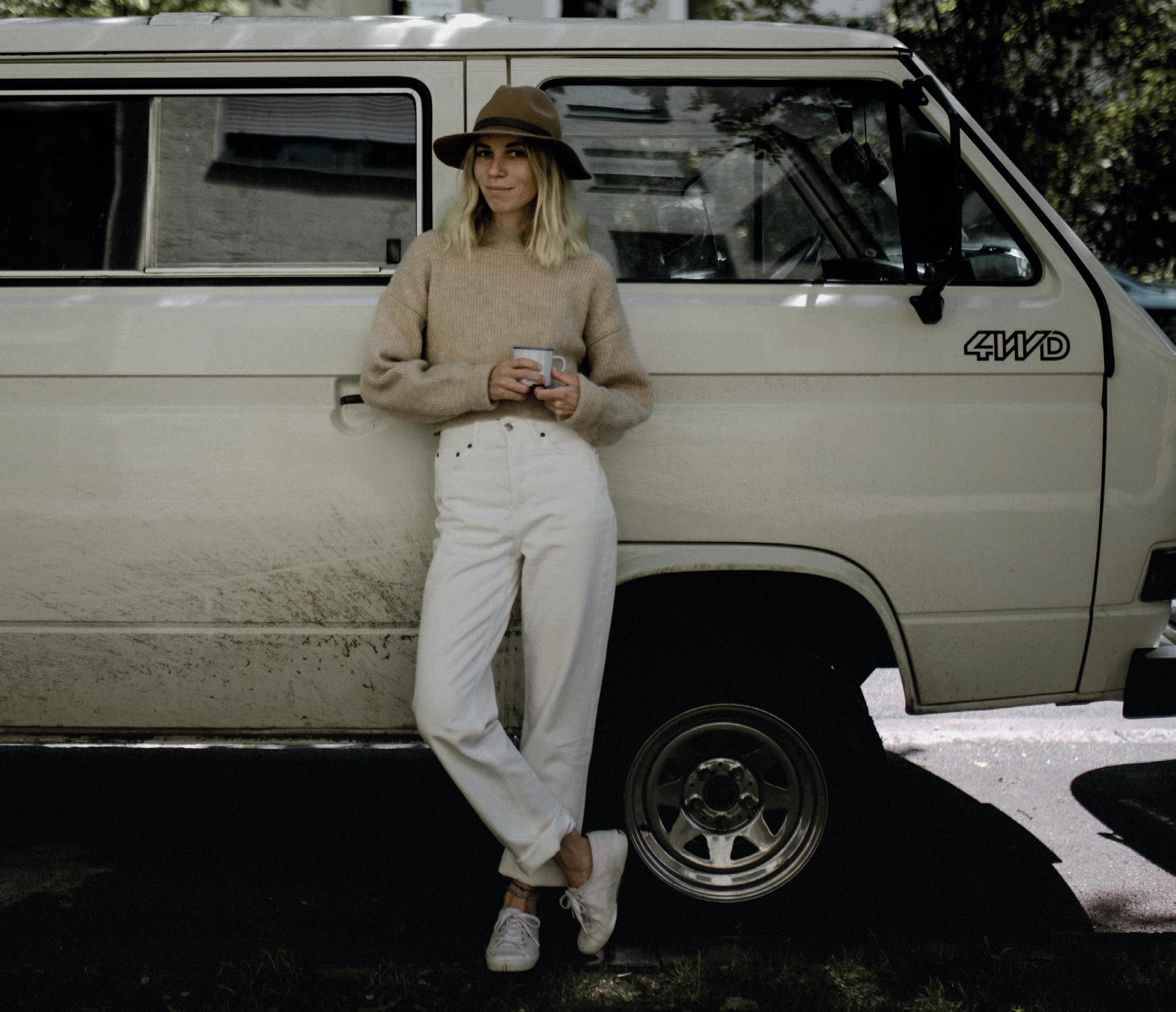
So how do we do that? First, says Edmondson, we need to understand our limits: ‘If we want to go beyond superficial lessons, we need to jettison a few outdated cultural beliefs and stereotypical notions of success. We need to accept ourselves as fallible human beings and take it from there.’
This acceptance is key: ‘Thriving as a fallible human being also means learning to fail well: preventing basic failures as often as possible, anticipating complex ones so as to prevent or mitigate them, and cultivating the appetite for more frequent intelligent failures.’
Another way to feel more comfortable is by recognising failure as an opportunity to acquire knowledge and to adapt. ‘If you’re not failing, you’re not journeying into new territory,’ notes Edmondson. ‘Every kind of failure brings opportunities for learning and improvement.’ As Gannon writes, of the perceived flop of her first book, ‘How can something be a failure, when it resulted in so much growth?’
The key to making failure work in our favour is taking the time to learn the lessons it can teach us. ‘Acknowledging our shortcomings requires and builds wisdom,’ says Edmondson. ‘Wisdom allows us to know that we’ve done as well as we can, and confronting ourselves will always be the hardest part of failing well. Also, the most liberating.’
41 REFRAME
Right Kind of Wrong: Why Learning to Fail Can Teach Us to Thrive by Amy Edmondson (Penguin) is out now
IMAGES: UNSPLASH/KINGA HOWARD, DAVID WAYNE
Katherine May

IMAGE: UNSPLASH/YULIIA TRETYNYCHENKO
‘We have seasons when we flourish and seasons when the leaves fall from us, revealing our bare bones. Given time, they grow again.’

Enough is enough
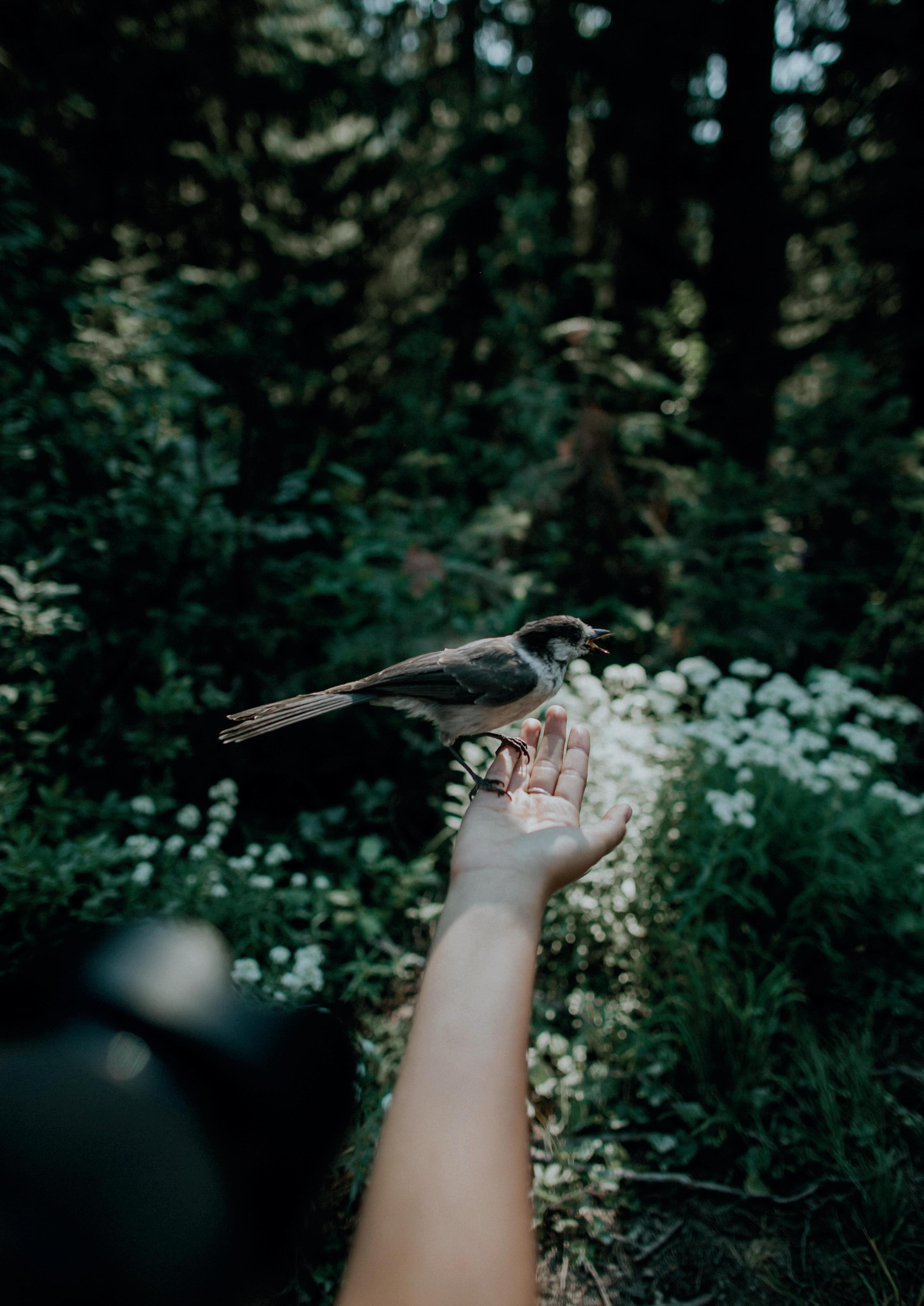
Learning
–
Cast your mind back to 2017. The world was gripped by hygge-mania: everywhere you turned, people were extolling the virtues of the Danish philosophy, which asks that we dedicate time to savouring life’s simple pleasures.
Fast-forward six years. Now a new philosophy is filtering into our collective consciousness: the Japanese art of aramahoshi, or ‘desirable ideal’. Aramahoshi is about finding peace in imperfection and recognising that what we have is enough – a mantra for our troubled times if ever there was one.
The term was coined in an essay by fourteenth-century poet and Buddhist monk Kenkō, who wanted to encapsulate the need to find contentment in a precarious, ever-changing world. ‘The most precious thing in life is its uncertainty,’ he wrote. ‘It is the ephemeral nature of things that makes them wonderful.’
While hygge quickly became all about the aesthetic –hunkering down in front of a roaring fire while wearing cosy knitwear (and mostly likely documenting your sense of wellbeing on Instagram) – aramahoshi is the opposite. It is about looking past consumerism and carefully curated visuals, and embracing life as it is, with all its many flaws.
More than a philosophy, aramahoshi is a way of living. It asks us to reevaluate our lives and focus on what’s important, while recognising that challenges we face are necessary obstacles: ones that can lead to much-needed change and transformation. ‘Leaving something incomplete makes it interesting,’ Kenkō wrote, ‘and gives one the feeling that there is room for growth.’
How can we achieve aramahoshi in our day-to-day?
45 MINDFULNESS
»
to love
and live – with what you have is the key to a life transformed, says Luciana Bellini
IMAGE: UNSPLASH/IVANA CAJINA
EMBRACE THE UNCERTAIN
‘The only constant in life is change.’ This oft-cited phrase ties in perfectly with aramahoshi, which asks us to find peace and satisfaction amid a world in constant flux. Instead of battling life’s ambiguities, try to savour things that are out of our control. Let’s shift our focus from what has gone unexpectedly wrong, and instead find joy in things that have turned out surprisingly well – a project that went better than we thought it would, or a bus that we were chasing stopping long enough for us to catch it.
LOOK BEYOND SUPERFICIAL SUCCESS
Our world’s obsession with ambition and success goes against everything aramahoshi stands for. Kenkō wrote about the importance of enjoying things that may be only beginning or ending, rather than complete: ‘Are we to look at cherry blossoms only in full bloom, the moon only when it is cloudless?… Branches about to blossom or gardens strewn with faded flowers are worthier of our admiration.’
In a world that is always demanding more, take a moment to slow down and find contentment in the enough. Find joy in creating a beautiful table-setting for a meal at home, rather than wishing you were at a Michelin-starred restaurant. Be grateful for what you have, rather than hankering after what you don’t.
LIVE IN THE PRESENT
Many mindfulness practices ask us to live in the moment, and aramahoshi is no exception. It encourages us to be active observers of our lives; to recognise and change harmful patterns. Instead of striving for the next big thing, let’s take stock of what we have in the here and now; find moments in our day to pause and ground ourselves in the present. That’s where life happens. Let’s move away from hectic juggling acts and constant multitasking, and focus our time and attention on just one thing. ‘There is nothing finer,’ wrote Kenkō, ‘than to be alone with nothing to distract you.’
AVOID COMPARISON
Comparison, it is said, ‘is the thief of joy’. Social media has created a comparison pandemic, in which we wonder endlessly if other people’s homes, lives and careers are better and more fulfilling than ours. Instagram and TikTok are the antithesis of aramahoshi, which asks us to find contentment in having just enough.
Break the cycle by rationing your use of social media, or taking a break from it altogether. Perhaps Kenkō had a prophetic notion of how much time we would waste on this fruitless yearning when he wrote: ‘All things of this phenomenal world are mere illusion. They are worth neither discussing nor desiring.’
46 IMAGE: UNSPLASH/DMITRY GANIN
In a world that is always demanding more, take a moment to slow down and find contentment in the enough.

MINDFULNESS

IMAGE: UNSPLASH/VADIM PARIPA
‘Don’t fear failure. Fear being in the exact same place next year as you are today.’
Michael Hyatt

MANIFESTING YOUR BEAUTIFUL LIFE
As naturally creative beings, we have the power to manifest our dreams into reality. All it takes is a willingness to be open to the possibilities available to us, discovers Nicola
Chantler
50 REIMAGINE
IMAGE: UNSPLASH/KITERA DENT
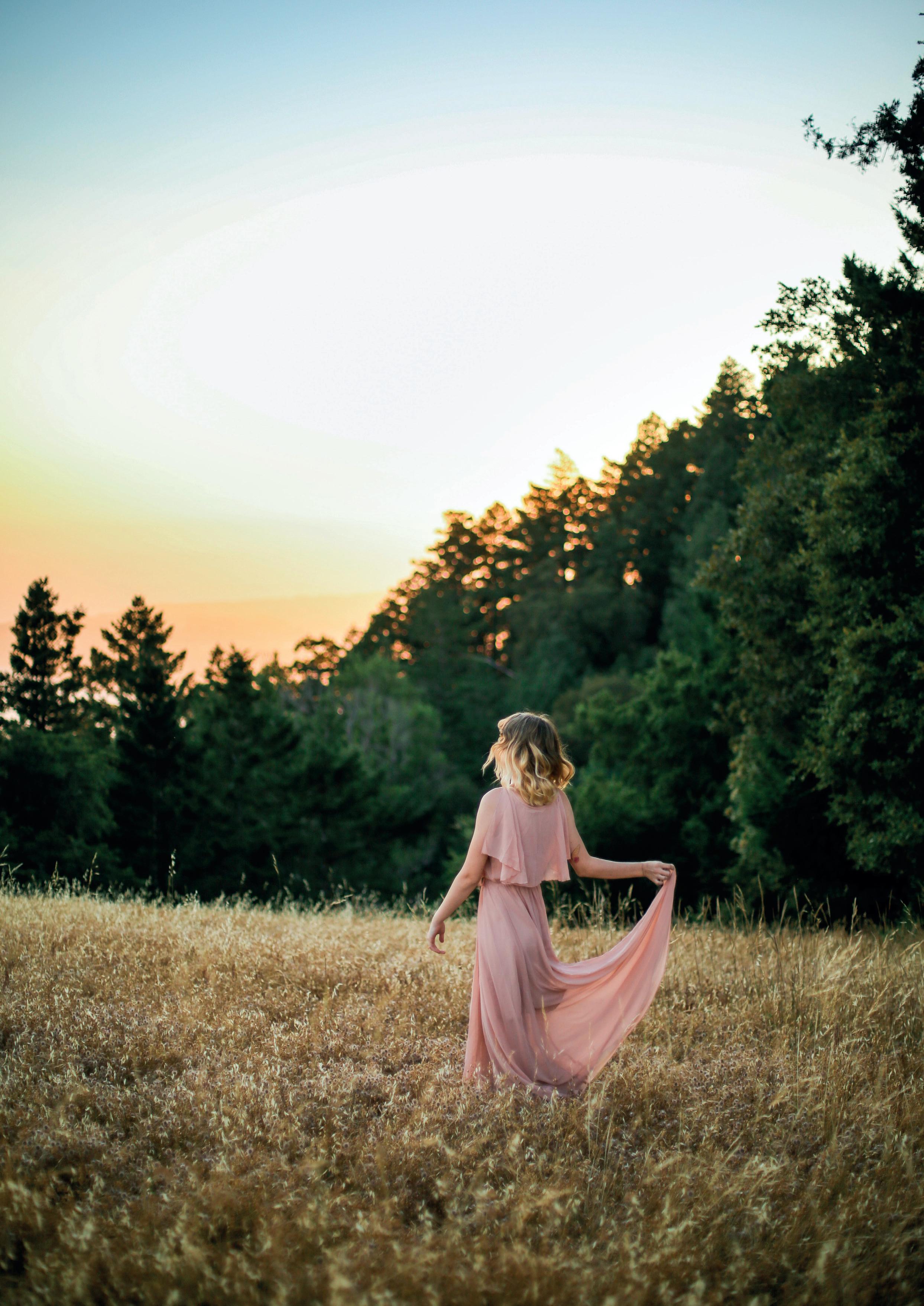
We are natural born creators. We possess an inherent magic that enables us to conjure waking life decisions from dreams. We might set an intention to take on a challenge, to learn a new skill, or to persist at something that is out of our comfort zone.
Our intentions can be as big as relocating overseas to begin a new life, or as small as committing to a short meditation on our lunch break. Yet at the core of our intentions lies one universal truth: the creative spark that brings it to life.
‘Creativity is not a rare ability,’ writes Rick Rubin in The Creative Act: A Way of Being. ‘It is not difficult to access. Creativity is a fundamental aspect of being human. It’s our birthright. And it’s for all of us.’
Our innate creativity enables us to manifest change in our lives. As the saying holds, ‘Where attention goes, energy flows.’ By directing our energy into nurturing our creative endeavours, we set in motion change and action.
This is the art of manifesting: consciously bringing our dreams into reality by tapping into powers within and around us. And it’s not a new concept: it has been tried and tested throughout history.
Manifesting requires us to surrender to our deepest truths through creative thought and imagination, and hence bring our dreams to the surface. ‘As you travel from birth to death, a series of doors open for you,’ writes Carolyn Boyes in The Art of Manifesting. ‘For many of us, we stumble through doors by accident without thinking much about our choices. When you intentionally manifest, it’s different. You choose which doors you are going to open.’
As Joseph Murphy writes in The Cosmic Power Within You, ‘You have faith when you know that thoughts are things; what you feel, you attract; and what you imagine, you become.’ This reminds us that, by nurturing our creative intention and focus, we can
change our world.
But what if we have never dared to dream of our ideal life, or felt our dreams were too beyond reach to become reality? How can we open ourselves to the endless possibilities that await us?
Along our path, we naturally experience unhelpful thoughts that stop us connecting to our intentions. Those thoughts could include imposter syndrome, feeling too ambitious, letting other commitments or responsibilities take priority over our creative pursuits, looking for others to validate our journey… the list goes on.
But interrupting these negative thoughts and discovering what we wish to manifest is simpler than we might imagine. ‘We tend to take so much for granted,’ writes Rubin. ‘Most of what we see in the world holds the potential to inspire astonishment if looked at from a less jaded perspective. The beauty around us enriches our lives in so many ways. Train yourself to see the awe behind the obvious.’
Our manifesting journey calls on us to be open and awake to the magic within and around us, and to the universal powers at play. Our creative intentions carry a vibration that, when put out into the world, invokes the law of attraction. When our creative force buzzes, the vibration grows, and the universe returns that energy by attracting different experiences to us.
‘Your true power is the power to manifest a different life…’ writes Carolyn Boyes. ‘The life you have now is the one you cocreated with the universe. [Thus] you can unmake it and remake it in accordance with what your heart truly wants.’
Making space in our busy lives to open our awareness to what sparks our curiosity is the first step. ‘Those who choose this path will find out that they are no longer a victim of circumstance but can make their own choices and thrive,’ Boyes says. ‘It is never too late to become what you hoped you might become.’
52 REIMAGINE
IMAGE: UNSPLASH/BLAKE CHEEK
Manifesting requires us to surrender to our deepest truths
3 STEPS ON YOUR MANIFESTING JOURNEY

OPEN YOUR AWARENESS
Find a quiet space, sit comfortably and close your eyes. Notice your breath moving quietly through your belly. As you relax, sense your breath slowing and your awareness opening. See the black, blank space behind your closed eyes. Imagine this as a screen on which to bring your dreams to life. Consider what brings you joy; the last time you felt truly happy creating. Picture this emerging on your screen in full colour, as if it’s happening there and then.
Feel the energy of this moment radiating through your body: spiralling from your centre and into your heart space. Bask in these sensations for a few moments. Then return your attention to your body. Allow the resonance of the experience to permeate your whole being. Open your eyes.
JOURNALING
CREATE A VISION BOARD
Using a pinboard or large piece of card, cut out pictures – from magazines or photographs – that mean something to you and the life you want to create. On separate pieces of paper, write words or sentences about the life you desire. Picture what you would like to do. Picture where – and with whom – you would like to be. What brings you pleasure? Be honest about what feels right for you and your life. Keep the vision board wherever you can look at it regularly, deepening your connection to yourself and the universe.
Take time each day to write down your dreams and desires. Let the words flow through you, without giving them too much thought. Write about experiences you have enjoyed, things you want to let go, and what is commanding your creative attention. At the end of each entry, spend a few moments turning your desires about your life into positive, present tense statements: ‘I am safe and happy in my new life abroad,’ for example, or, ‘I am prioritising my needs when I take time to meditate.’
2
1 3
‘Do you have the patience to wait till your mud settles and the water becomes clear?
Can you remain unmoving until the right action arises by itself?’

IMAGE: UNSPLASH/WARION TAIPEI
Sharon Blackie
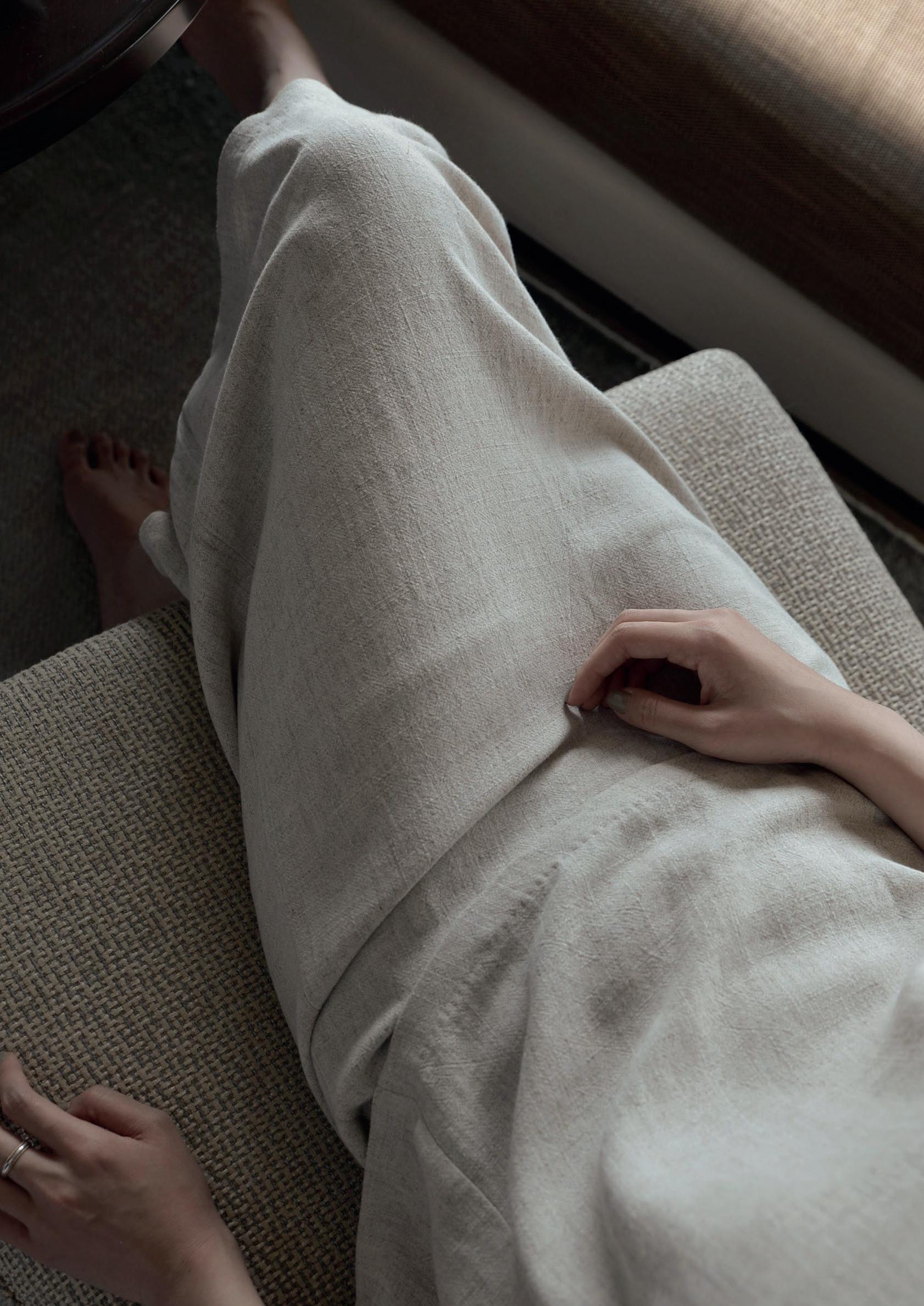
Reclaiming ourselves
Selflessness is not a virtue – it is a coping mechanism. Now is the time to reclaim yourself, says Suzy Reading

56
Selflessness is a virtue, right? It’s something we all aspire to. But have you considered where this impulse comes from? Have you paused to reflect on whether it serves you, and the people you love?

Take a moment to examine how you feel about self-care. Maybe you’ve noticed feeling resentful towards others when they take a break. Even when we overcome the barriers of time, energy and expense – and even when a genuine spare moment appears – it can feel uncomfortable to turn our attention and care inwards. And when we deny ourselves, we tend to begrudge others their nourishment and self-expression.
Now’s the time to reframe your relationship with selflessness and how it shapes your capacity to meet your needs, to express your emotions and to honour your boundaries with yourself, and other people. It might just unlock the deep compassion we’re all searching for.
Where does the compulsion to be selfless originate? Take a look at cultural messaging and gender stereotypes and you’ll see it starts at birth. ‘Good’ babies don’t cry: they sleep well and don’t trouble their parents. We learn that expressing emotion and voicing needs is not acceptable. We may have moved on from the era in which children were supposed to be seen and not heard, but perhaps we haven’t evolved as much as we think, because a ‘good’ child does not talk back to grownups. If we don’t encourage that skill, how can we expect our kids to advocate for themselves in adulthood?
‘Good girls’ are people-pleasers. Sadness is allowed, anger is not. Aggression is permissible for boys, but not the right to cry. Schools reward children for attendance, reinforcing that it’s not okay to take time out to meet your needs, to heal and restore.
In adulthood, resilience is lauded above all. We’re praised for ‘getting on with it’, regardless of whether that hinders or halts the healing process. Males are expected to ‘man up’ and provide. Women must be nurturers, upholding the selfless ideal.
And that’s before we consider the children who are thrust into a caregiving role at an early age, the children of narcissistic parents, and anyone who has suffered emotional abuse. All of that is a perfect recipe for resentment and rage. And because emotional expressions are not welcome, they get turned inwards, leading to depression, or we numb ourselves to them, and push on towards burnout.
SELF
If emotional expressions are not welcome, they get turned inwards, leading to depression, or burnout
IMAGE: UNSPLASH/JONATHAN BORBA
Selflessness is not a virtue – it is a coping mechanism, because we have been told from as early as we can remember that it’s not okay to express certain emotions, to voice needs, or to tend to them.
Maybe it’s better that we don’t have needs at all, and instead be self-sacrificing. The statistics on self-harm in children and suicide rates in men, and the fact that suicide is a leading cause of death in new mothers, show that our relationship with ourselves needs desperate attention.
Please can we begin by unhooking ourselves from a relentless drive to be selfless? It is okay to honour your sense of self, including your right to feel, your right to express yourself, and your right to acknowledge, voice and meet your human needs. It is essential for your health and the health of your relationships.
Let the reframing begin. It’s time to reclaim ourselves. The opposite of selfless isn’t selfish; it is self-honouring – with boundaries.
We can uphold our values of generosity, kindness and care, but this does not have to come at the expense of our health and wellbeing. Our depletion serves no one and our sustenance serves everyone.
We can be good citizens, diligent students and contributing team members, and still take sick leave, for the mind and the body. We can be present, loving parents and have a sense of self beyond our role as parent. It doesn’t have to be ‘me first’, but please can it be ‘me as well’?
So, how can we reclaim our sense of self?
Acknowledge that it is okay to have a sense of self, beyond the roles you play in life. This doesn’t make you selfish: it facilitates healthy boundaries that serve you, the people you love and everything that matters to you.
Get to know yourself. Spend time reflecting on what’s important to you – your values and your strengths. Cast aside what you’ve been told. You get to choose what a purposeful life looks like.
Observe and tend to your needs. This can take practice, especially if you’ve spent decades overriding those messages from your mind and body. Some resistance is likely to remain, but remember: when you meet your human needs, you are better resourced and more effective. You have greater access to the qualities important to you. Ask yourself: what is the scaffolding in my day that I need to model my values? If I want to be kind, compassionate, reliable, a fair leader, a good team player or a present parent, what are the daily and healthy habits I need to commit to?
Make space for your emotions. They all have their place. But be clear: allowing ourselves to feel does not allow us to behave in ways that cause harm. We need to learn how to move through all of our emotions in safe and healthy ways. Giving voice to them, journaling, being creative, moving, breathing, self-massaging and interacting with nature all facilitate a cathartic release.
Watch the benefits of these self-commitments ripple out beyond you, fuelling the kindness, care and compassion you wish to bring to the world, and allowing connections that are meaningful, healthy and authentic. This is our whole selves coming together: honouring the union but also honouring the unique parts.
Suzy Reading is a mother of two, author, chartered psychologist and coach, specializing in self-care. She has written The Self-Care Revolution, Stand Tall Like a Mountain, The Little Book of Self-Care and This Book Will (Help) Make You Happy. suzyreading.co.uk
58 SELF
IMAGE: UNSPLASH/JONATHAN BORBA
It is okay to honour your sense of self, including your right to feel, your right to express yourself



IMAGE: UNSPLASH/TAISIIA SHESTOPAL
‘Reason lost the battle, and all I could do was surrender and accept I was in love.’
Paulo Coelho
Rekindling the fire

How do you rejuvenate a failing relationship? Is it possible to achieve true contentment? Luciana Bellini searches for answers
Popular psychotherapist Philippa Perry broke new ground when she released The Book You Wish Your Parents Had Read (and Your Children Will Be Glad That You Did) in 2019. An instant bestseller, the book earned her a legion of fans, thanks to its sage advice on how to be a better parent and form stronger bonds with your children. And now she’s hoping to do the same for relationships in general with her new The Book You Want Everyone You Love to Read.
Designed to help with the most important relationships in our lives – romantic, platonic, familial or work-related – it’s essential for anyone looking for answers to life’s biggest questions: how do you find and keep love? How do you rejuvenate a failing relationship? Is it possible to achieve true contentment?
The book is split into four main sections: how we love, how we argue, how we change and how we find contentment. Each aims to provide practical, honest advice to help our relationships thrive. ‘To truly connect with others,’ Perry writes, ‘we need to be not who we think we ought to be, or who we think they want us to be, but who we really are.’
To understand why a relationship has gone awry, and how we can fix it, it’s important to first recognise that we have no power over other people. We can control only ourselves and the way we react to things. Perry quotes the ‘doyenne of self-help’, Susan Jeffers, who said: ‘You are good enough exactly as you are, and who you are is a powerful and loving human being who is learning and growing every step of the way.’
If the first step to repairing an ailing relationship is accepting what we can control and letting go of what we can’t, what’s the next? ‘Ask what that relationship means to you,’ says Dana
63
» IMAGE: PEXELS/JASMIN CHEW RELATIONSHIPS
IMAGE: UNSPLASH/TOA HEFTIBA
PHILIPPA PERRY
Our relationship with ourselves affects our relationships with others
Moinian, psychotherapist at London clinic
The Soke. ‘Repairing broken – or breaking – relationships will require you to be honest, vulnerable, compromising and brave. So, if you’re going to expend so much in an attempt to make things better, you really need to be invested in wanting it. Even if things don’t go as you hoped they would, you won’t have regrets if you can be sure that relationship was worth the effort.’
When once-strong relationships flounder, says Moinian, there’s usually a key factor: ‘It’ll come down – directly or indirectly – to communication. The first piece of advice, therefore, is to ask: how is your communication different to what it used to be, and why? Try not to look at how the other person has changed in the way they communicate with you; instead, look at how you may be different, either in the way you’re giving or receiving messages.’
Perry agrees, writing: ‘We don’t have to have it all worked out before we start to talk – sometimes we only find out what we are feeling, or what we know, in conversation with others.’
When trying to rejuvenate a relationship, our actions could spell the critical difference between success and failure. ‘People mistake love for something you fall into, whereas it is much more than that,’ writes Perry. ‘Acting lovingly is something you do. Love is not just passive.’
As for feeling stuck in a relationship rut, Perry says it can be overcome only by taking responsibility for our actions and beliefs: ‘Identify your patterns of behaviour, notice whether these are a response to the past, and then start to respond to your circumstances as they are now.’
If you’re looking to rekindle something that feels lost, Moinian suggests reminding yourself what first drew you to that person: ‘Sometimes, what we like about someone is the way they made us feel. So as our feelings about ourselves change, so too will our feelings about the person, who may see us in a way to which we no longer relate. This, incidentally, can apply to our interests or views of the world, which may evolve and leave others behind.’
Perry notes that self-awareness and reflection are key: ‘It is so much easier to blame something outside of ourselves for our discontent than it is to look inwardly for a cause.’
Ultimately, having positive and fulfilling relationships of any nature boils down to one thing: having a happy and successful relationship with ourselves. ‘Our relationship with ourselves affects our relationships with others,’ declares Perry. ‘Doing work on yourself is important. It isn’t selfish or self-indulgent, because it helps you get rid of all of the barriers that stop you becoming closer to someone else. We are all works in progress.’
64 RELATIONSHIPS
IMAGES: UNSPLASH/PRISCILLA
DU PREEZ, THOMAS AE, AZRUL AZIZ, TOA HOFTIBA, PURE JULIA






IMAGE: PEXELS/ JASMIN CHEW

‘Even if you regret, it will not reverse what happened. Rethink, relearn and replan, so you will not repeat what happened.’
IMAGE: UNSPLASH/EVGENIYA BOROVSKA
Gift Gugu Mona

THE NEW AGE
From the ancient wisdom of the elder to the underestimated power of the ‘hag’, women are reframing what it means to be in the final act of their lives, says Elsa Mills


68 AGE
In the pecking order of female archetypes, ‘the crone’ always seemed the least desirable final destination.
Following the thrusting vibrancy of the blossoming and blooming ‘maiden’ stage, and the beautiful, divine creativity of the ‘mother’ phase, ‘the crone’ felt like a step down, a reduction. A celebration of knowledge perhaps, but mostly a stooped being, lacking the fire and beauty of her former iterations.
The three archetypes – maiden, mother, crone – have been a feature of writing and philosophical thought about women for centuries. They indicate not only our path through life, but elements of the female experience that are always within us, and on which we call when we need them.
Our maiden reminds us of eternal possibility and growth. She embodies independence and a passionate striving forward.
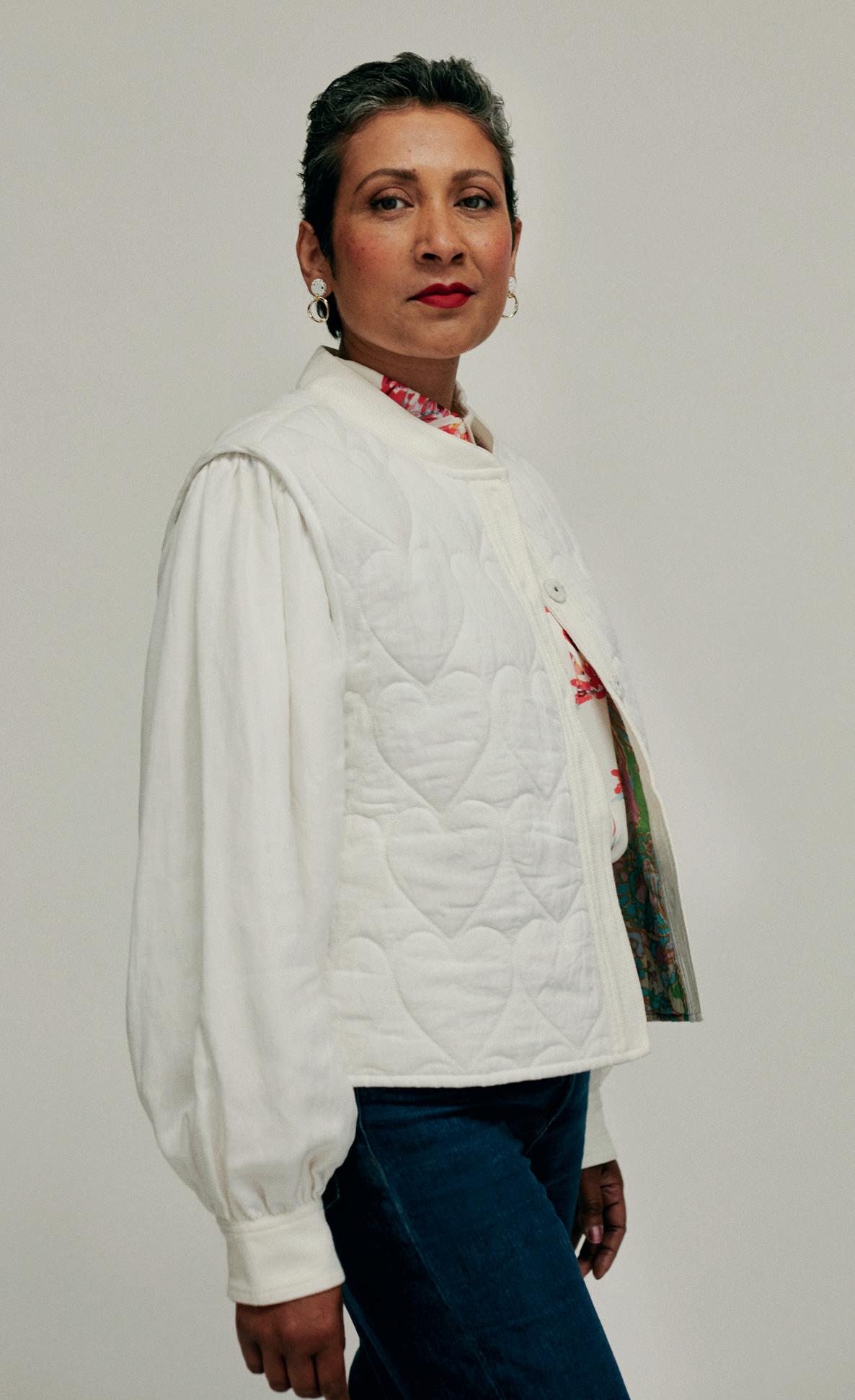
Mother evokes nurturing and creativity – epitomised by a deep connection to our womb space and ability to bring forth life. Even for women who don’t have children, the mother is a

69
figure that comes to us in the middle of our years and brings both self-love and the nourishing of those around us.
But it is our crone that holds perhaps the most potential for the deep work of self-knowledge and discovery. The crone represents our trust in wisdom held within, gathered through our lives and experiences – and which, in the later stage of life, makes us most open and confident.
‘Crone comes to you with irrevocable authority, sanctioning you to trust the wisdom within,’ says Niki Dewart, coauthor of The Wild & Sacred Feminine Deck ‘Crone cares little about what anyone else thinks… She delves deep inside herself, drawing from the wealth of wisdom pooling where her menstrual blood once flowed. She dwells within you, regardless of your age, calling you inward to the root of your sagacity.’
The crone is also known as a ‘hag’, from the Greek ‘hagia’, meaning ‘holy one’. The hag’s wisdom and innate power is being culturally reframed by influential thinkers and writers, offering a new perspective on how to think about our post-fifty years.
‘I have come to see menopause as an act of rebellion,’ says Arlene Bailey in The Crone Initiation. ‘It is a time in a woman’s life when she is finally and completely unto herself. A time when she is no longer something that men want to control, for she no longer bleeds nor bears children. To society, she is seen as useless and becomes invisible. And because society can no longer label her and put her in a box, she becomes an enigma. She also becomes free.’
In the blank space created by being neither maiden nor mother, the crone has infinite possibility. Dr Sharon Blackie’s book Hagitude turned the ‘old lady’ legend on its head in a powerful call to action: ‘We have to say no to the cultural narrative which would render elder women invisible or write us off as irrelevant. But first we have to take responsibility for ourselves and find a narrative to offer in its place, to uncover our own unique inner hag and extend her fearlessly into the world.’
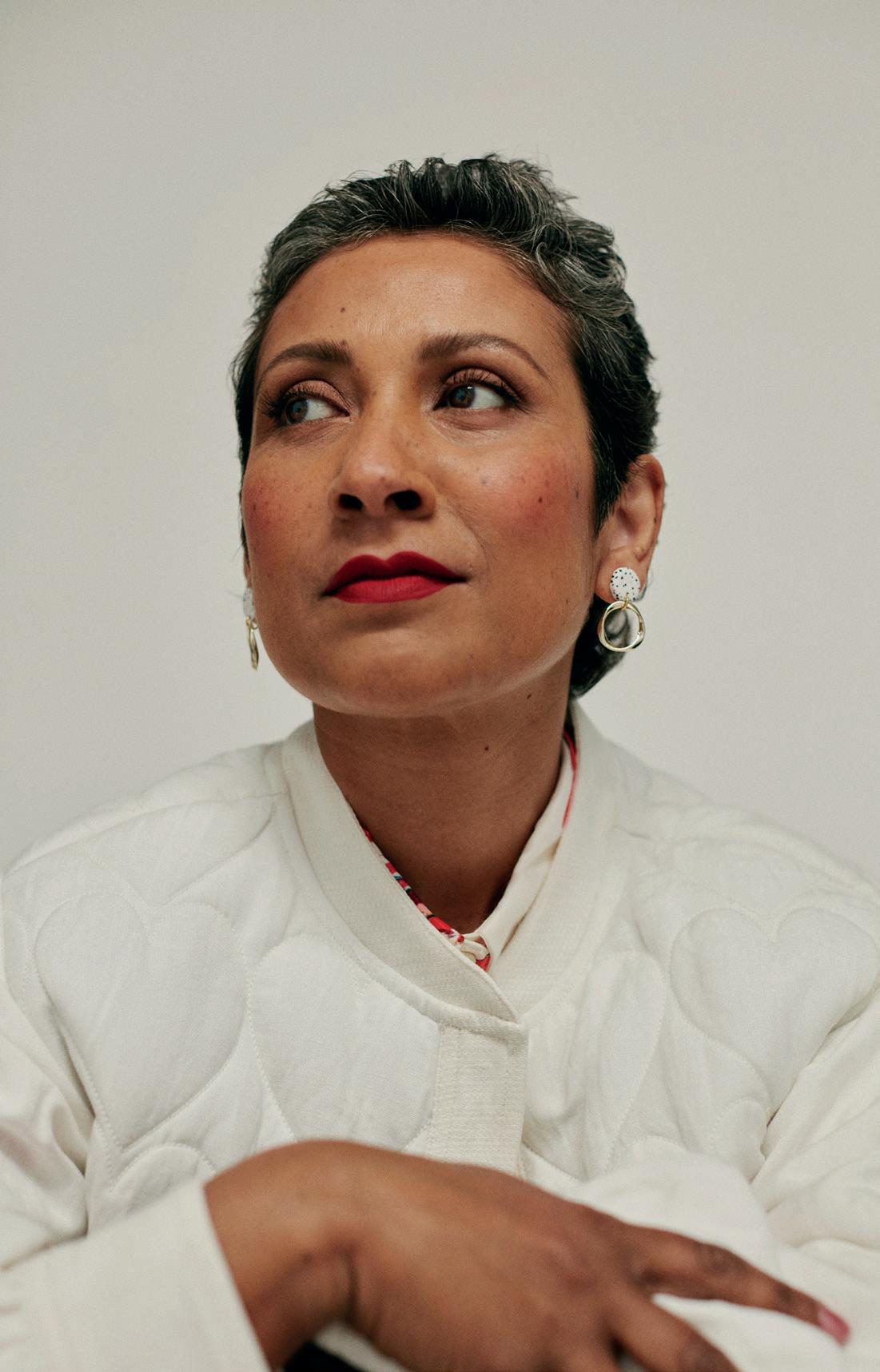
Blackie presents the hag, or crone, as a force for good: ‘The inner hag whose image we each carry within us reflects our own unique variety of wisdom, the gift that each of us has to offer this breaking and broken world, and our own particular brand of connection to the numinous.’
The crone figure brings to the forefront key aspects of human existence and asks us – both men and women – to face things from which we often turn away: death and rebirth, completion, endings, self-assurance, the unknown, darkness, letting go, surrender, change.
70
IMAGES: UNSPLASH/CENTRE FOR AGEING WELL
In the blank space created by being neither maiden nor mother, the crone has infinite possibility
‘She accepts change, appreciates the good in her life, grieves what dies or loses vitality, and goes on,’ says Jean Shinoda Bolen in Crones Don’t Whine. ‘When it’s time to let go of one phase of her life, she can, which makes the next phase possible.’
This acceptance is the gift that enables us to embrace our hag status in its fullness, especially when you consider that our role is vital for those who come after us.
Writing about grief in The Wild Edge of Sorrow, Francis Weller argues that those who undertake the essential work of mourning and loss come back changed and deepened, and in turn become leaders in their own communities: ‘Any who undertake real mourning return with gravitas; wisdom gathered in the darkness. These women and men become our elders, the ones who can hold the village in times of great challenge.’
It is in the facing of these things that the crone or hag finds her biggest challenge. Because, to many, this phase of life represents failure and fear: a failure to stay young, a fear of getting older, a fear of irrelevance, a failure to represent those things that a modern, patriarchal society values. The crone or hag stands for divine feminine knowledge, deep and ancient wisdom, facing our pain, feeling the sharp edges of our lives, trials and tribulations, spirituality and faith.
‘We don’t much talk about spirituality in this postEnlightenment culture, which respects and rewards only rationality,’ writes Blackie. ‘We live in a society whose power systems value only the material, and which dismiss, become vaguely embarrassed about, or actively ridicule the spiritual.’
And yet by facing these things with curiosity and without fear, the crone becomes a guide for herself and others, and becomes part of the vital village of women’s lives that has so nearly been lost. If we can bring this crone figure into our lives, we will create a space for elder women – ‘Strong and fierce guardians and protectors of the land,’ says Blackie –who will guide and protect us.
In a world where the crone or hag is normalised, getting older becomes a beautiful part of the passage of our lives. As we walk with courage through the most troubling and difficult parts of our life, even death, we gain – and take with us into our older years – wisdom that we pass on to others.
The crone, says Shinoda Bolen, ‘is improving, adapting to change, responding to what engages her energy. If the metaphor is music, her instrument is herself and the deep theme of her song follows the beat of her heart. Each phase is like a different movement and a major work with variations on her theme.’
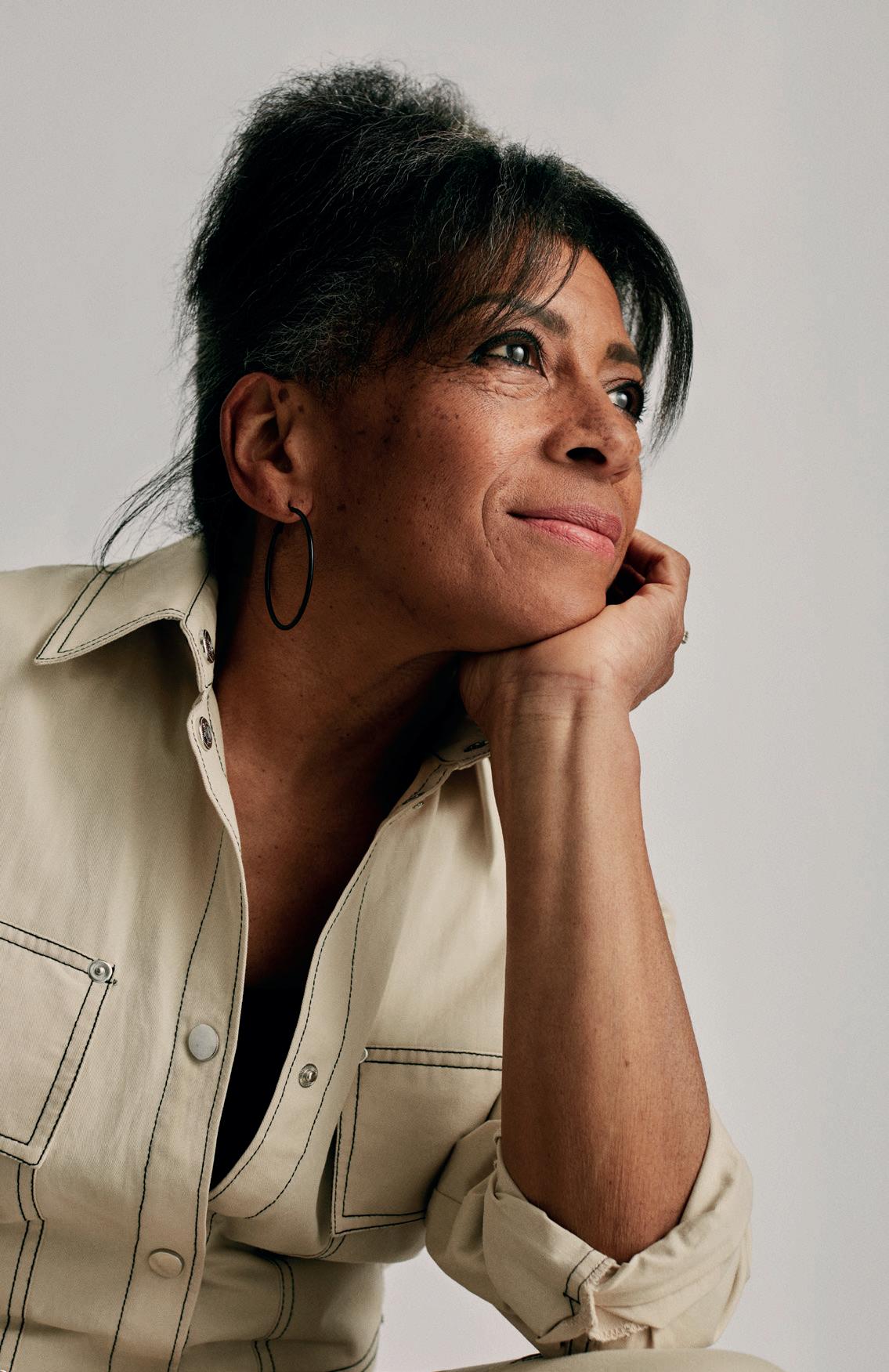
71 AGE
The crone or hag stands for divine feminine knowledge, deep and ancient wisdom
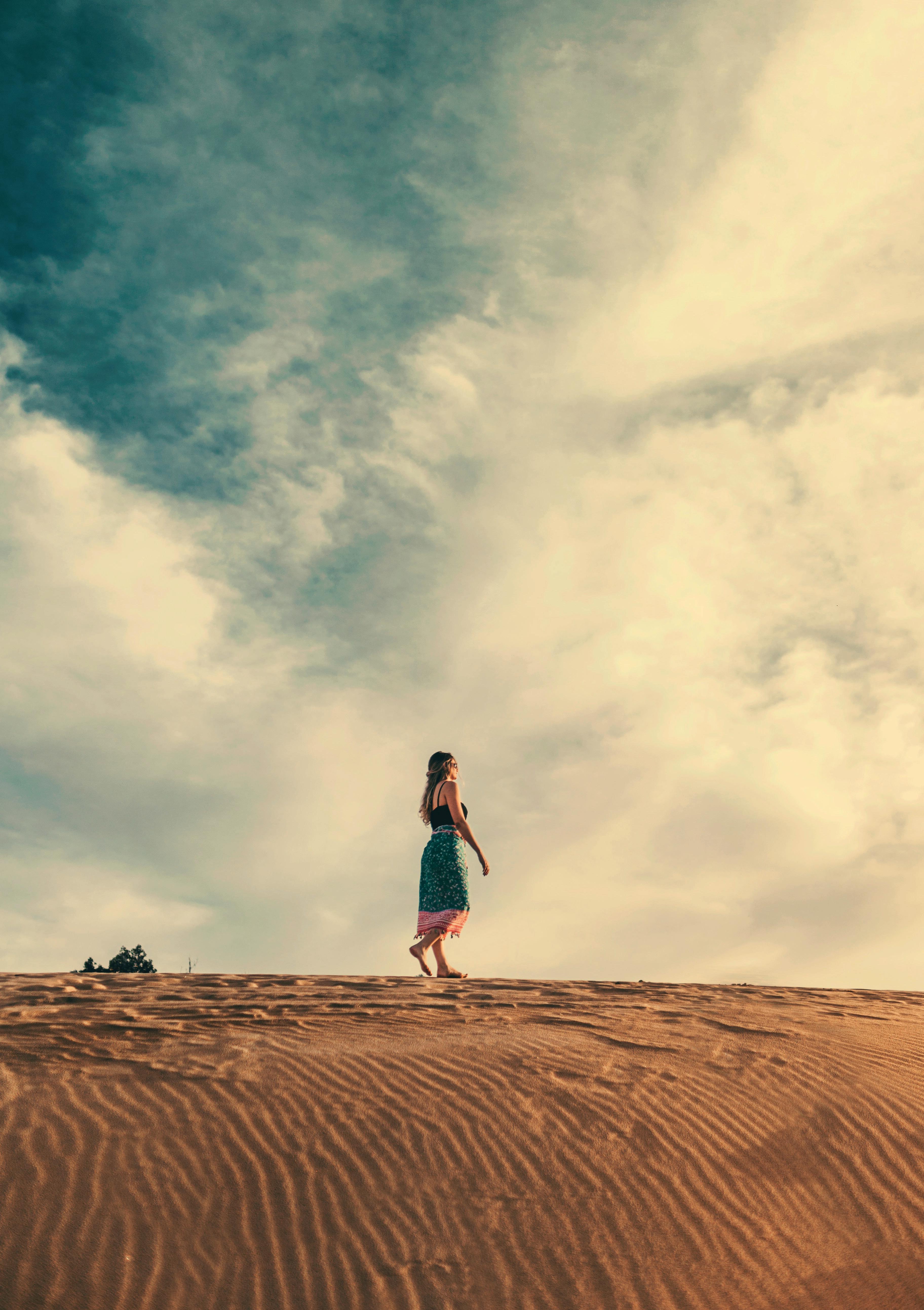

‘Imagination is the beginning of creation. You imagine what you desire, you will what you imagine and at last you create what you will.’
IMAGE: UNSPLASH/JONATHAN BORBA
George Bernard Shaw
Reimagining rest
We wear busyness like a badge of honour, and we burn out as the scales of our lives tip into chaos. But we can restore the balance with rest, writes Kat
 Teall
Teall
IMAGE: PEXELS/TARYN ELLIOTT

WELLBEING
»
Our relationship with rest is conflicted. Many of us yearn for it but dismiss the need for it. We see it as something with little value to offer in our busy lives, or we feel we don’t deserve it, or we find it difficult and uncomfortable.
We live in a world that is out of balance. Productivity is put on a pedestal and we wear our busyness like a badge of honour.
There are sound explanations for that. As women, rest was forced upon us, with the active and outside world taken away from us. This was rest as oppression: a way to control us and keep us out of the parts of society where decisions were made, where power was wielded, and where opportunity and education existed.
As capitalism and the patriarchy flourished, resting didn’t correlate with the money-driven, progress-centric world. And so, to keep up, we kept busy. We knew, instinctively, that rest was oppression, and so we resisted as much as possible, to avoid returning to a shackled past. But now we’ve been conditioned to internalise these damaging systems, and find ourselves unable to stop the endless treadmill of keeping up and keeping busy.
The impact of that has been enormously damaging. Women are exhausted, especially those of us who work in jobs outside the home but are still responsible for most of the housework and childcare.
We are burnt out and, increasingly, suffering chronic health issues, insomnia, depression, and other mental health conditions. The burden we carry is made even heavier by the impossible standards of perfection we are expected to meet, which make us struggle to keep our heads above water.
We must be career women, excelling at our jobs, but we must also be Nigella Lawson in the kitchen. Our homes must look like they’re featuring in House and Garden. We must be perfect mothers and perfect wives.
How are you? ‘Busy,’ we answer proudly, because busyness makes us feel we are important, in demand, and winning at life. We are addicted to it. We use it in the way we would use drugs and alcohol: to numb our pain and our trauma, to escape ourselves, and to escape our minds, which torture us with constant berating that what we do and who we are is not enough.
And the less we rest, the further away we move from ourselves. Many of us no longer know who we are or what we actually want to do. We desperately need rest, but our trauma and our conditioning block us from accessing it. Guilt and shame are invisible shackles that keep us trapped in the grind.
To break that cycle, we need to reimagine rest as a kind of freedom.
Rest is not truly known to most of us. We have been introduced to it but not formed a deep and intimate connection with it. Many of us associate rest with vegging out on the sofa, watching TV or scrolling through our phones. Others see it as any restful activity that we do while we’re awake, such as going for a run, reading a book, or crocheting.
These are forms of rest that nurture parts of us, because we’re escaping areas of our lives that have become excessive. They restore balance. Physician Saundra Dalton-Smith has even identified seven varieties of this type of rest: physical, mental, emotional, sensory, social, creative and spiritual.
But while these varieties have merit, they are not rest in its purest form, because they are all active and require focus. They keep us focused on the outside world, whereas true rest brings us into our inner world and deeply replenishes our mind, body and soul.
76 WELLBEING
To rest is to surrender from the active, from goals, and from the desire to achieve results. It is napping, or meditation, or watching clouds roll past and listening to rain tapping on the window, or doing nothing.
Deep rest is medicine that heals us. It is a sacred space where we can put down our burdens, and seek solace from the demands, the pressure and the pushing. A chance to drop everything and to receive and to just be. Nowhere to go and nothing to do.
When we lay down our fight and rest, it is sanctuary. ‘Me time’ is just that: a chance to be ourselves and to shed our guises. We are more than the roles we perform and the use we provide to others. ‘Me time’ gives us the opportunity to come back to ourselves – to think about what we actually desire.
Rest is resistance. True resistance. In resting, we dismantle the systems within us – and that changes the world.
When we treat ourselves like beings with needs – which include rest –rather than machines, expected to sustain the same level of output every day, we value ourselves enough to give ourselves what we need. Or we realise that we are enough as we are, resting in our inherent worth and deservedness.

Rest is not something we have to earn by fulfilling expectations. It is not a destination at the end of a never-ending to-do list. It is a welcoming inn where we can stop off regularly, take refuge and refuel for the journey that is our life. Resting uncovers the soul, creativity, wonder, joy, peace and power that become lost in our busyness.
Rest teaches us to listen to and honour the needs of our body, which does so much for us with so little appreciation; to stop abusing it with our relentless mind; to develop a balanced relationship between mind and body.
Rest is an alchemic container: when we give ourselves space to be with what lies within us, and come into our bodies and sit with the darkness we carry inside, we process and digest our trauma and grief. That heals us and transforms our pain into pleasure, our trauma into power and our disease into health. Rest is our birthright – we just need to reclaim it.
Kat Teall is a psychologist, coach and founder of The Rest Rebellion, therestrebellion.com. She challenges the unhealthy status quo around productivity and rest, and empowers women to say no, to put down their load and to come back to themselves.
Find her on Instagram @therestrebellion
77 IMAGE PREVIOUS PAGE : UNSPLASH/ANDRIYKO
PODILNYK, ANN ANILINA
Rest is resistance. In resting, we dismantle the systems within us – and that changes the world

IMAGE: UNSPLASH/JESSICA DA ROSA
‘The world you desire can be won. It exists... it is real... it is possible... it’s yours.’
Ayn Rand

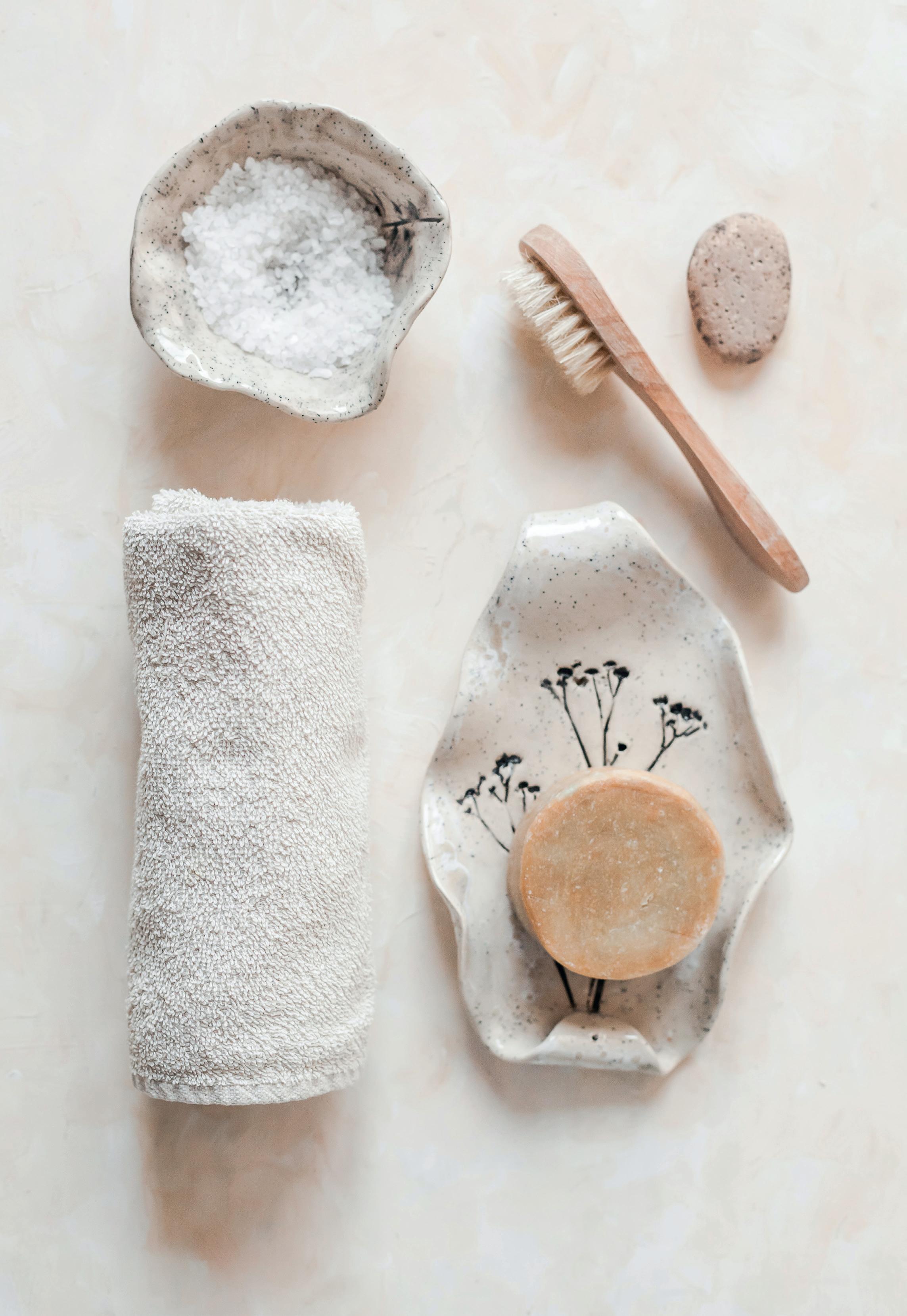
CLEAN SLATE
Autumn is ideal for reevaluating our beauty and wellness. More time indoors and the back-to-school mood make it ideal to take stock of even the smallest routines.
Claire Brayford handpicks beauty and skincare launches so you can be truly renewed
81 BEAUTY
IMAGE: UNSPLASH/DIANA LIGHT
>
THE HERO INGREDIENT
Saviour Niacinamide Correcting Duo Moisturiser, £79, Avant
When we think of resets for our skin, we mostly think retinol, but it’s time to get acquainted with the gentler niacinamide (aka vitamin B3). Hydrating, calming, brightening, smoothing and strengthening, it refines skin, reduces enlarged pores and prevents moisture loss. Avant’s skincare range is teeming with it. Get ready to heal and improve.
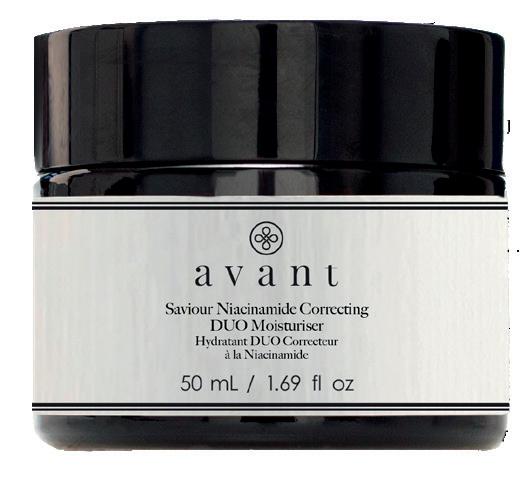
THE EXFOLIATOR
The Radiance Exfoliating Glow Treatment, £110, Seed to Skin Refresh without stripping with this gentle cream. It uses superfine mineral crystals and enzymes to create microdermabrasion action that unclogs and clears impurities. Boasting 100 per cent active ingredients, the cream makes skin look brighter and more glowing.

THE NIGHTTIME CARE
The Supreme Anti-Aging Skin Care, £580, Sisley

We maximise our skin’s regeneration at night, and Sisley’s Supreme Anti-Aging Skin Care Cream does just that. Natural ingredients fix the damage of the day and stimulate self-cleaning. Skin is oxygenated, collagen is promoted and visible fine lines are softened.
THE FOUNDATION
Softlight Skin-Smoothing Liquid Foundation, £42, Rose Inc
Rose Inc’s foundation gives a flawless matte finish and is bursting with skin-improving ingredients: magnolia complex to balance the skin microbiome, fermented reishi mushroom to strengthen its moisture barrier, ectoine to calm, and fruit extract to reduce redness and minimise pores. The feather-light hydrating formula makes skin look gloriously healthy.

THE CONDITIONING SPRAY
MahaMane Detangling Leave-In Conditioner, £28, Fable & Mane Make hydrating and nourishing part of your regular hair routine with Fable & Mane’s conditioner. The mistand-go detangling spray protects against UV rays and heat damage. Enriched with aloe vera and amla, the lightweight elixir smooths knots and leaves hair soft, shiny and smelling great.

THE SLEEP TONIC
Sleep Tonic, £34, Artah Reset your body clock and improve your wellbeing. Taken before bed, this organic botanical tincture has a soothing, sedative effect designed to help you switch off and sleep through the night without next-day drowsiness. The ingredients also reduce anxiety and stress, and improve your mood, so you feel the benefits far beyond bedtime.

THE EYE SHADOW
Solo Shadow, £26, Merit Merit’s solo shadows brighten eyes without the need for a fiddly palette. The single shade is designed to be used all over the lid, giving a soft matte finish for zero creasing or fallout. The buildable, cream-topowder formula creates a sheer wash that can be layered for depth.

82
<
< < < < <
THE NAIL REVIVAL
Pure Nail Strengthening

Treatment, £16, Margaret Dabbs
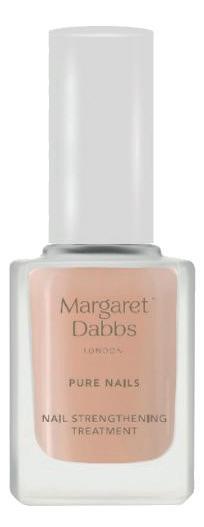
London
This multitasking formula aids recovery, promotes growth and strengthens soft or fragile nails. With celery seed complex and essential fatty acids to hydrate, plus argan oil and vitamins B5, E and F, it’s just the ticket for weak, brittle nails prone to peeling, ridges and splitting.
THE LIP BALM

Beauty Soar Collection Lip Balm, £150, Valdé With opulent packaging and a magnifying mirror, this Valdé balm features colour-adaptive pigments that create a shade unique to you. Enriched with nourishing shea butter and jojoba oil, it melts into lips to give a smooth, plump look. The vegan range uses only clean ingredients, and can be refilled to reduce single-use plastics.
THE BRONZER

La Poudre Bonne Mine, £38, Les Filles en Rouje

THE CHEEK TINT
Glassy Blush by the Glass, £23, espressOh

The ‘it’ blush this autumn is completely clear – at least at first. The cheek tint contains PH-reactive technology, so the transparent jelly transforms or reacts to your skin. The result: naturally dewy, flushed cheeks. The gentle, rosy hue
We’re obsessed with Parisian designer Jeanne Damas’s range, especially the stylish bronzer. Following a less-ismore approach, it enhances rather than conceals skin, so the lightest sweep of the velvety powder gives a wonderfully natural, sun-kissed glow. The softmatte finish doesn’t cake or set into fine lines, and the tortoiseshell case is impossibly elegant.

THE EYE SERUM
Super Anti-Aging Eye Serum, £250, Dr Barbara Sturm


Eyes will be brighter than ever with Dr Sturm’s anti-aging serum. Potent active ingredients strengthen capillary vessels, fade dark circles, depuff bags, reduce the appearance of fatigue and fine lines, moisturise, soothe irritation, and improve the skin texture.
THE MUD TREATMENT
Moor Mud Ritual Set, £275, Omorovicza Brewed for thousands of years at the bottom of the world’s largest active thermal lake, Moor Mud is the star ingredient of Omorovicza’s Mud Ritual range. Bursting with organic active minerals and acids, it detoxifies, cleanses, nourishes and softens skin. And, infused with a healing concentrate, it’s perfect for when skin is inflamed and pores are clogged.

THE HAIR MASK
Glossing Hair Masque, £65, Ranavat
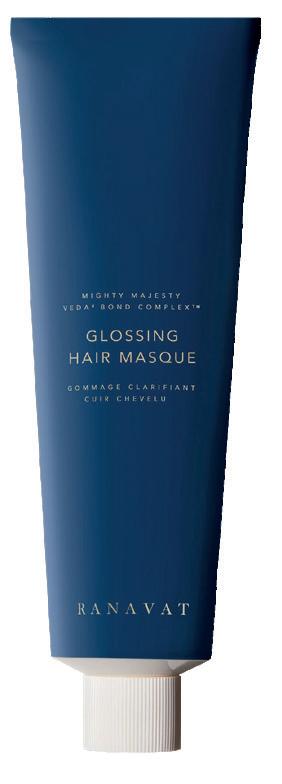
It pays to use an intense treatment that resets hair from within. This lightweight, in-shower treatment hydrates and repairs dull, dry and damaged strands. Unlike salon-based treatments that form a superficial coating on the hair, this mask – rich in fatty acids – works from the inside out. It leaves hair three times shinier and 93 per cent stronger.
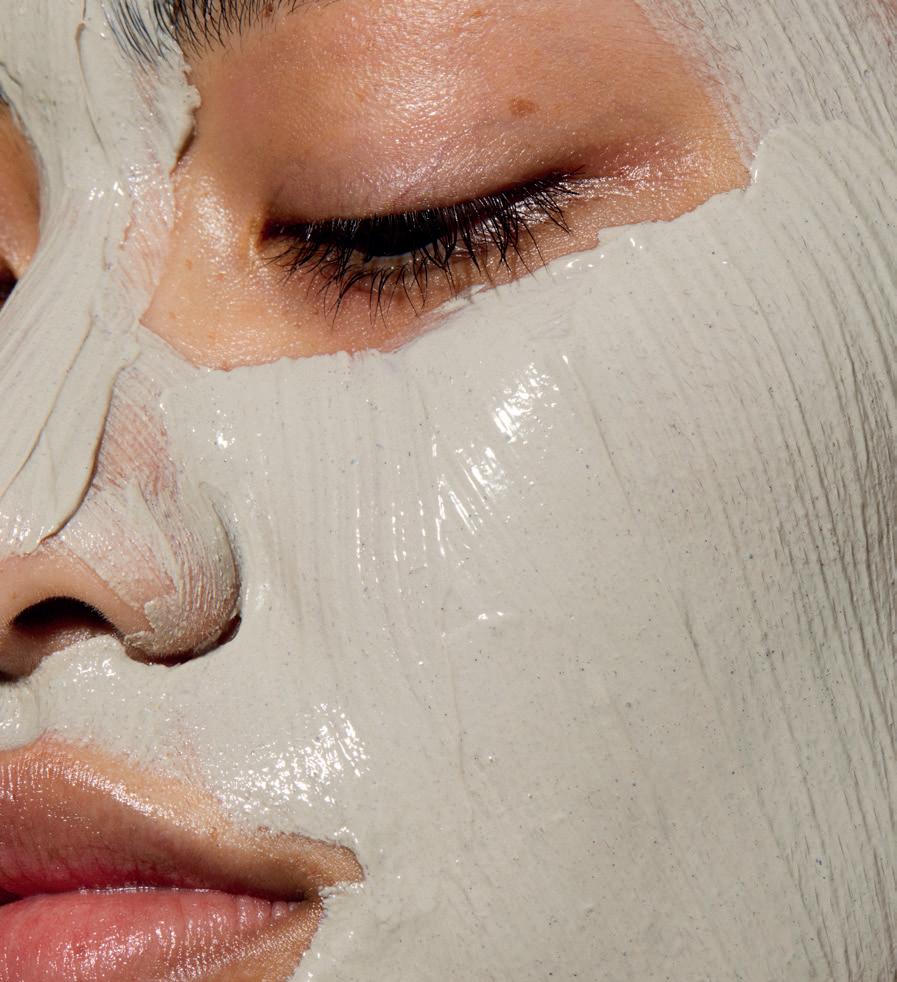

83 BEAUTY
< < < < < < <
IMAGES: SHUTTERSTOCK
PAUSE FOR THOUGHT
Unlocking our full potential
The journey towards personal growth and empowerment is a dynamic process, and our mindset plays a pivotal role in shaping this transformative path. For strong, independent women, cultivating a positive and growth-oriented mindset is key to unlocking our full potential and achieving our aspirations.
EMBRACING A GROWTH MINDSET
A growth mindset is essential for embracing change and making positive contributions to society. Women are naturally blessed with qualities that make them exceptional givers and nurturers. Our innate empathy, compassion and ability to understand others allow us to connect on a deeper level, fostering understanding and harmony.
When women embrace a growth mindset, we recognize that challenges and obstacles are opportunities for learning and development. This empowers us to overcome barriers, break stereotypes and pursue our dreams with determination and resilience.
As women thrive and embrace change, we inspire those around us. This creates a ripple effect of empowerment and progress in the pursuit of a more inclusive and harmonious world.
OVERCOMING SELF-IMPOSED LIMITS
Independent women often encounter self-imposed limits that hinder progress. These may include imposter syndrome, a fear of failure or a perception that an achievement is beyond our reach.

By adopting a growth mindset, we can challenge and overcome these limiting beliefs. That enables us to venture into uncharted territory and embrace new possibilities with confidence.
NURTURING RESILIENCE
The path to strength and independence is rarely smooth, so resilience is the key to bouncing back. A growth mindset plays a pivotal role in nurturing resilience, helping us to view setbacks as temporary hurdles that provide valuable lessons for personal growth.
Armed with resilience, strong women rise to challenges with renewed determination and perseverance.
CULTIVATING SELF-CONFIDENCE
A positive mindset empowers strong, independent women to cultivate self-confidence. By acknowledging our achievements, recognising our abilities and maintaining a positive outlook, we can
84 SLUG HERE
Dr Asma Naheed considers the important role of mindset in personal growth and change
develop unwavering confidence in ourselves and our capabilities. This self-assurance becomes a driving force that propels us towards achieving our goals.
EMBRACING ADAPTATION
Life is a journey of constant change, and embracing it with an open mind is crucial for personal growth. A growth mindset allows us to adapt to new circumstances, embrace opportunities and proactively seek self-improvement.
By viewing change as a natural part of life, strong women can harness its transformative power to create positive and empowering outcomes.
FOSTERING A SUPPORTIVE NETWORK
A growth mindset extends beyond individual growth; it influences the support network that surrounds strong, independent women. By fostering a growth-oriented culture within our community, we can inspire and uplift one another to achieve greater heights.
A supportive network is a foundation of strength,
offering encouragement, guidance and inspiration along the journey.
PURSUING LIFELONG LEARNING
For women seeking personal growth and independence, the journey is an ongoing pursuit of knowledge and self-improvement. A growth mindset encourages that lifelong learning, through formal education, skills development or personal enrichment. And that learning is a powerful tool for expanding horizons and unlocking opportunities.

In the pursuit of strength, independence and personal growth, a positive mindset is a powerful catalyst. It empowers us to break free from selfimposed limits, overcome challenges and embrace change with confidence.
By nurturing resilience, fostering self-belief and encouraging lifelong learning, we can unlock our full potential and create a fulfilling, empowered life. Let us continue to inspire and support one another on this transformative journey to becoming strong, independent individuals.
85
Dr Asma Naheed PhD is an educational psychologist and life coach who specialises in therapeutic and behaviour management IMAGE:
UNSPLASH/JEREMY BISHOP

‘You were given life; it is your duty (and also your entitlement as a human being) to find something beautiful within life, no matter how slight.’
IMAGE: PEXELS/PETROVSKII ANTON
Elizabeth Gilbert

Unlocking the power of metaphor
Embrace emotional states through mindfulness and the symbolic language of flowers, suggests Najla
In our fast-paced world, emotions often whirl like a storm, making many seek solace in the art of metaphorical expression. We harness the beauty of language, and find refuge in weaving our emotional tapestry through metaphors and stories. This evocative practice is a powerful conduit for selfdiscovery and understanding, leading to a more mindful existence.
Guided by Zen mindfulness teachings, I learned to embrace life’s challenges and celebrate achievements with equanimity. This journey of self-awareness revealed the profound impact of metaphorical language on my emotional landscape, offering insights into the depths of my feelings.
Amid this poetic exploration, alluring flowers stand out as a source of joy and contemplation. The rose takes centre-stage, captivating my spirit with its symbolic richness. In the delicate folds of its petals, I find the embodiment of love, passion and admiration.
But the rose’s significance extends beyond its romantic essence, as it reveals itself in three distinct parts, each carrying a profound message. The tiny bud, nestled among the roses, is a source of inspiration. It symbolises hope and the potential for growth, even amid life’s challenges. I realise that, just like the bud, my dreams blossom and flourish if I nurture them with patience and determination. It’s a reminder to remain open to change and embrace the beauty of new beginnings.
In the heart of the garden stands the majestic throne, a testament to inner strength and resilience. As I gently run my fingers along the throne’s surface, I feel the power of my spirit, forged by the trials I’ve faced. Each challenge has added another layer of strength, shaping me into a person capable of weathering any storm.
The three parts – rose, bud and throne – teach me to flow with the rhythm of life, finding balance and acceptance in its everchanging dance. I’ve learned to savour moments of joy, allowing
88 SLUG HERE
KEEPING FAITH
their frequencies to resonate within me like a soothing melody. In times of adversity, I discover purpose, knowing that challenges are opportunities for growth and transformation.
In mindfulness, I find refuge. It is the anchor that grounds me when life’s waters grow turbulent and the compass that guides me to clarity in times of confusion. With each passing day, I grow more appreciative of life’s struggles and achievements, recognising their intertwined role in shaping my journey.
I, Najla, continue to bloom like roses in the garden, embracing the full spectrum of human experience. The ritual of mindfulness is my companion, leading me through a vast desert of emotions, in which I discover solace and purpose in every step. And so, with renewed vigour, I walk my path, ready to face the unknown with an open heart and a mindful soul.
Join me on this enchanting exploration as we delve into the captivating world of metaphor, mindfulness and the multifaceted beauty of the rose. Together, let us unlock the transformative power of language and flowers, paving the way to a more enriched and mindful existence.

89 SLUG HERE
IMAGE: UNSPLASH/ARHIHOU ANAS
I continue to bloom like roses in the garden, embracing the full spectrum of human experience

‘The world changes when we change. The world softens when we soften. The world loves us when we choose to love the world.’
IMAGE: UNSPLASH/NADIN MARIO
Marianne Williamson

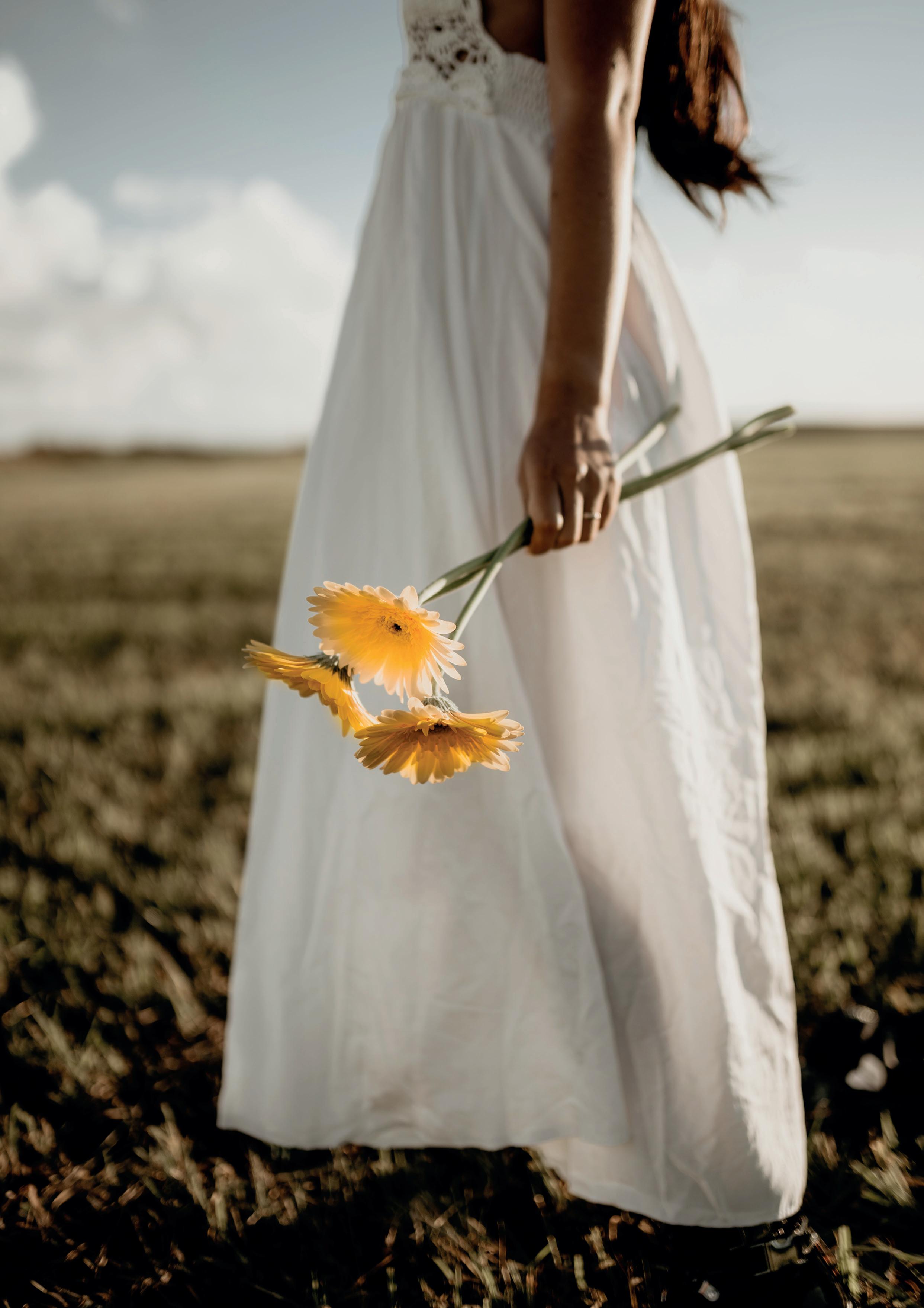
The coal basket
A simple lesson about the small steps we take to success
An old farmer lived in the mountains with his young grandson. Each morning, Grandpa woke early to meditate, read and contemplate wise teachings. His grandson loved and respected him, wanted to be just like him and tried to imitate him in every way.
One day the grandson asked, ‘Grandpa! I try to meditate and read wise teachings like you but my mind always wanders. I don’t understand much, and whatever I do understand I forget soon after. What good does meditation, reading and contemplating really do?’
The grandfather smiled, turned from putting coal in the stove and replied, ‘To understand this, I would like you to take this coal basket down to the stream outside and bring me back a basket of water.’ The boy did as he was told. But it was a wicker basket, so all the water leaked out before he got back to the house. The grandfather laughed and said, ‘You’ll have to move a little faster next time,’ then sent him back to the stream.
The boy ran faster, but again the basket was empty before he returned home. Out of breath, he told his grandfather that it was impossible to carry water in such a basket, and suggested they use a bucket instead.
‘I don’t want a bucket of water,’ the old man replied. ‘I want a basket of water. You’re not trying hard enough.’ And he came to the door to watch the boy try again.
By this time, the boy knew it was not possible. But he wanted to prove to his grandfather that, even if he ran as fast as he could, the water would leak out before he returned to the house.
92 SLUG HERE
ST OR Y OF W ISD OM
The clear, cooling streams of wisdom, awareness and love run through you, and you are changed, inside and out
The boy dipped the basket in the stream and ran hard. But by the time he reached his grandfather, the basket was once again empty. Out of breath, he said, ‘See Grandpa, it’s completely useless!’

‘You think it is useless?’ The old man smiled with a sparkle in his eyes. ‘Take a look at the basket.’
The boy looked at the basket and, for the first time, noticed it looked different. It had been transformed from dirty and discoloured to fresh and clean, inside and out. It looked like new.
‘This is what happens when you meditate, read and contemplate wise teachings regularly. You might not seem to be making progress. Your mind may wander. You may not understand or remember much. But the clear, cooling streams of wisdom, awareness and love run through you, and you are changed, inside and out. This is the blessing of practising wholeheartedly, without worry and expectation.’
The boy felt moved and satisfied by his grandfather’s remarkable example and clear explanation. His doubts and uncertainties evaporated, replaced by a warm and sunny confidence. Like the basket, he too felt bright, fresh and renewed.
93 SLUG HERE IMAGE: UNSPLASH/KAT MED
The Only One, The Unique
Al-Ahad is the one who was, is, and will ever remain alone. He is indivisible and the essence of unity. Nothing and no one can ever be equal to Him in essence and in all His beautiful attributes.
94 SLUG HERE
’ s
Al-Ahad God
name






















 AMY EDMONDSON (PENGUIN)
AMY EDMONDSON (PENGUIN)






















































 Teall
Teall































